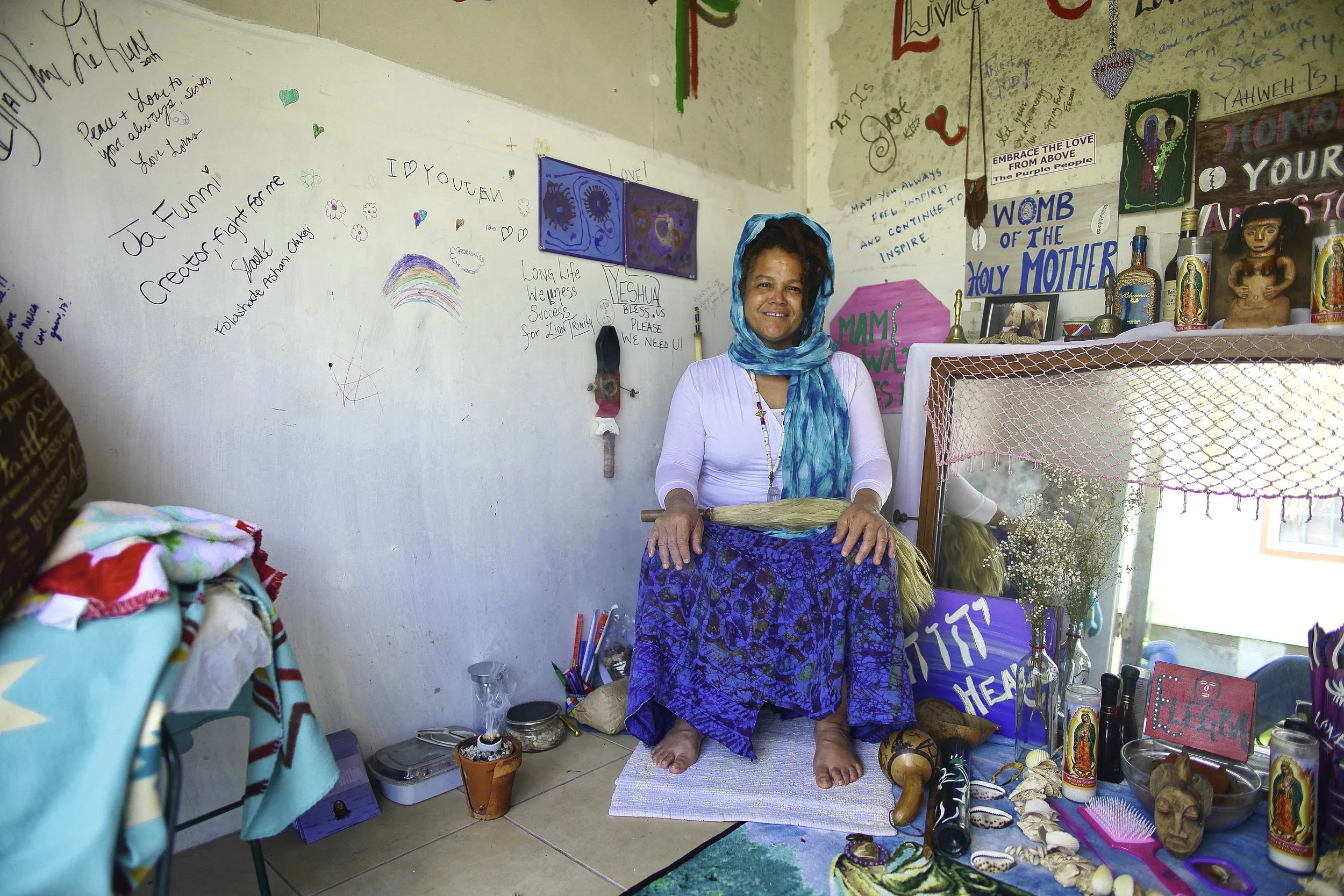Katrina Andry
b. 1981, New Orleans
Lives in New Orleans
Venue
Ogden Museum of Southern Art
925 Camp Street, New Orleans, LA 70130
Monday–Sunday, 10 AM–5 PM
Neighborhood
Downtown/Central Business District (CBD)
About the project
Colonial Colorism Influences in the Black Community - Past and Present is a series of woodcut prints that addresses the issue of colorism and how it has shaped social life for Black people in New Orleans. With both humor and an unflinching eye, Andry creates allegorical images that explore the way Black people, particularly women, have applied various European beauty standards to themselves and to other members of their community. Each print focuses on a different subject and, through iconography such as flowers, pearls, and fine china, as well as visual motifs drawn from popular culture, like Disney animations, reveals the way class, social standing, and public appearance can be defined by these values. Andry’s investigation of this hierarchical system that privileges one’s ability to identify with whiteness speaks to the deeply intertwined nature of appearance and social violence.
About the artist
New Orleans native Katrina Andry received an MFA (2010) in Printmaking. In her work she confronts issues of race, gender, bias, and privilege, as well as stereotypical representations of Black Americans. Her candid depictions of these stereotypes provoke viewers to consider the unjust nature of clichés and social norms and how privilege arises from the perpetuation of these stereotypes. Art in Print described Andry as one of the top 50 fine-art printmakers working today (September 2012). Her solo and group exhibitions include Over There and Here Is Me and Me, Halsey Institute of Contemporary Art, The College of Charleston (2019); Changing Course: Reflections on New Orleans Histories, New Orleans Museum of Art (2018); and Perceptions of Otherness, The Hammonds House Museum, Atlanta (2017), among others.
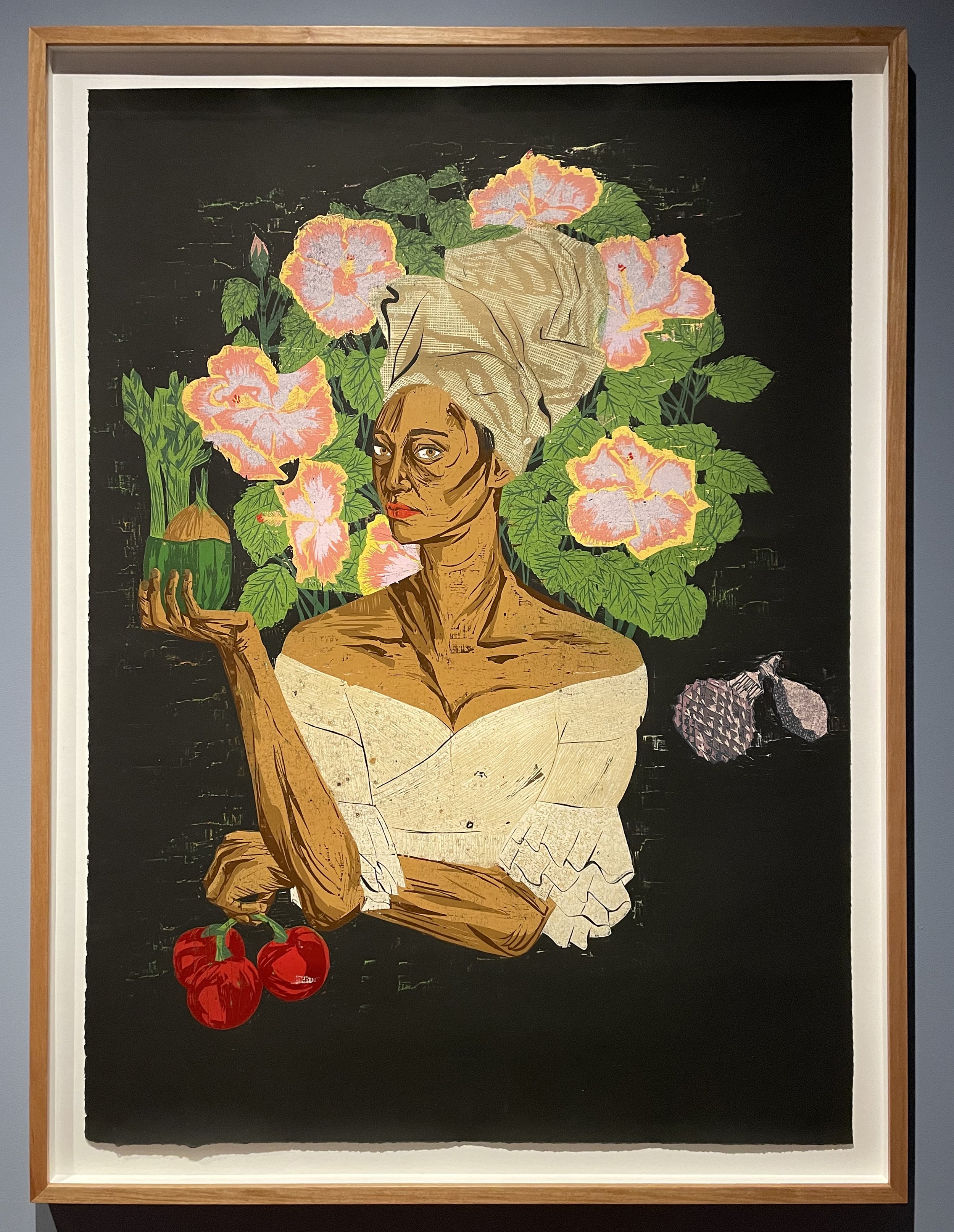
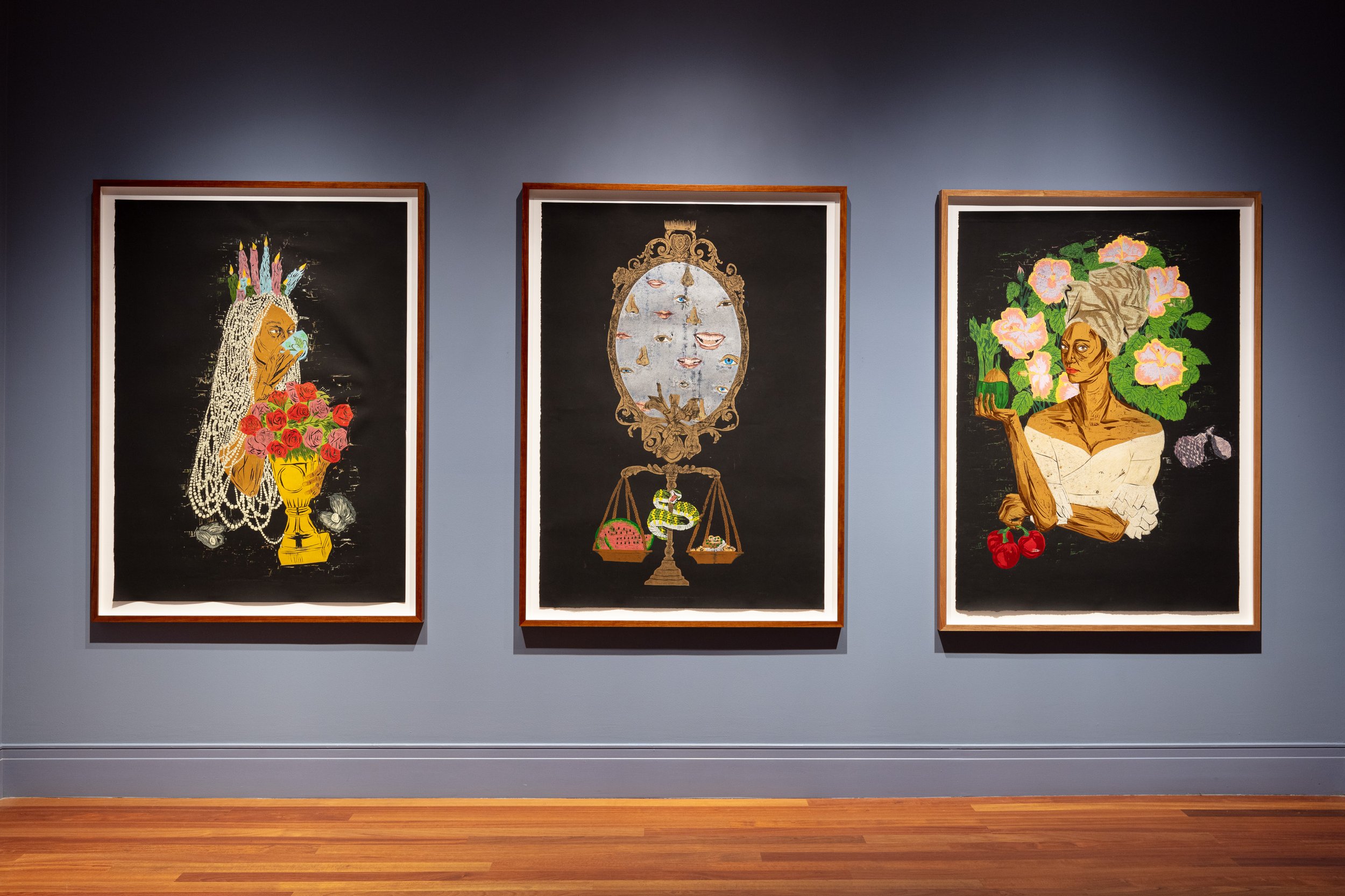
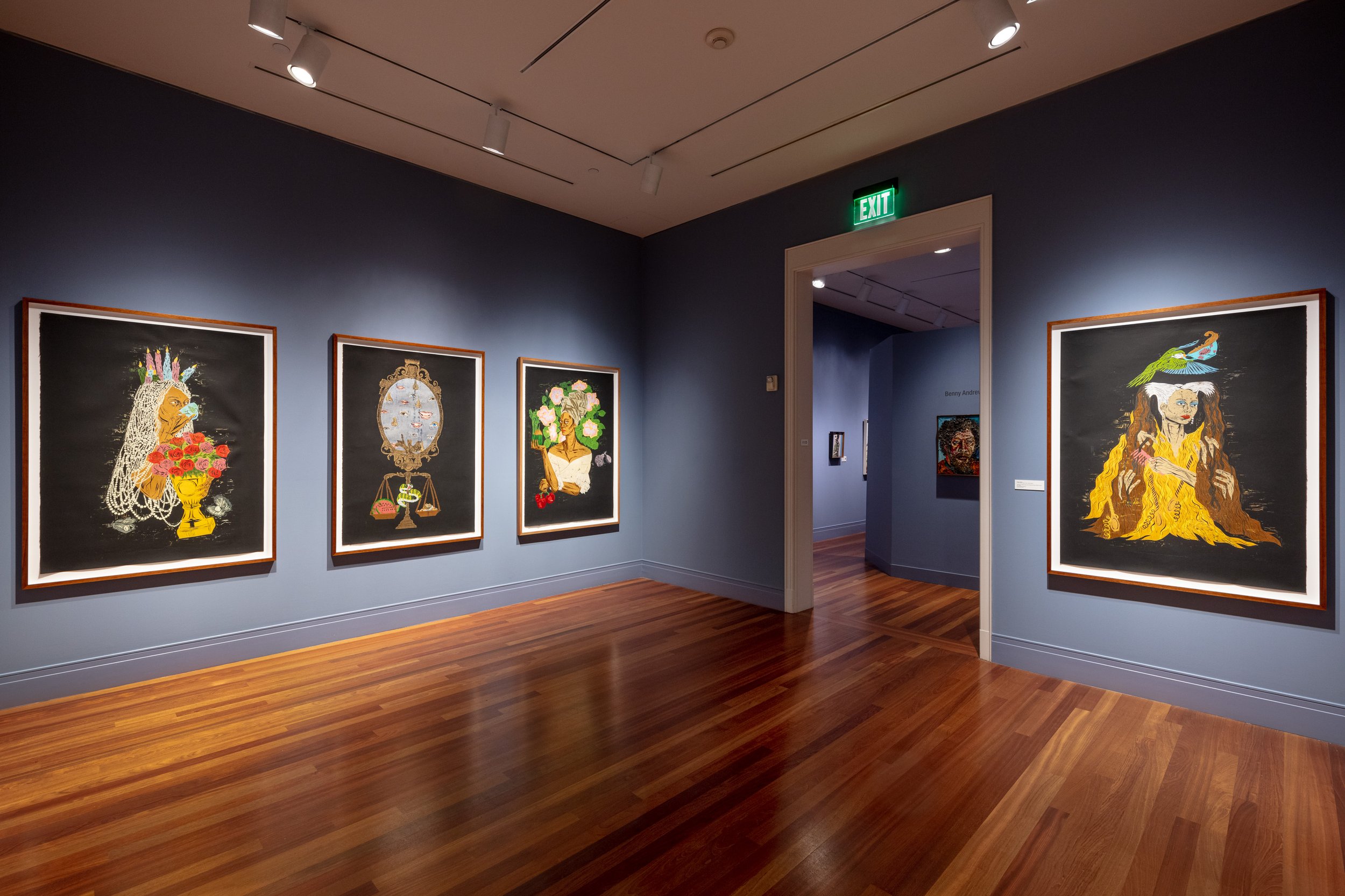
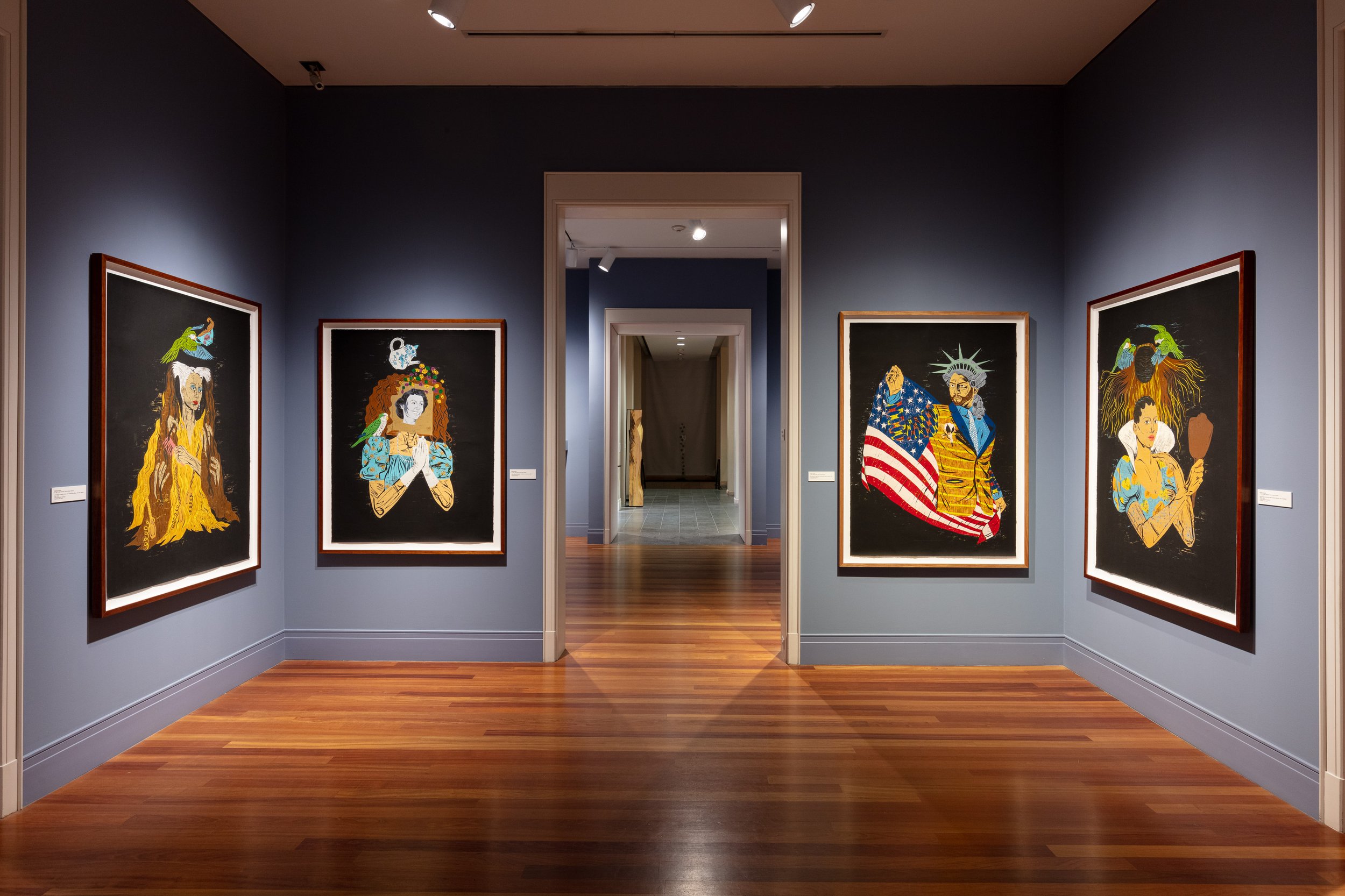
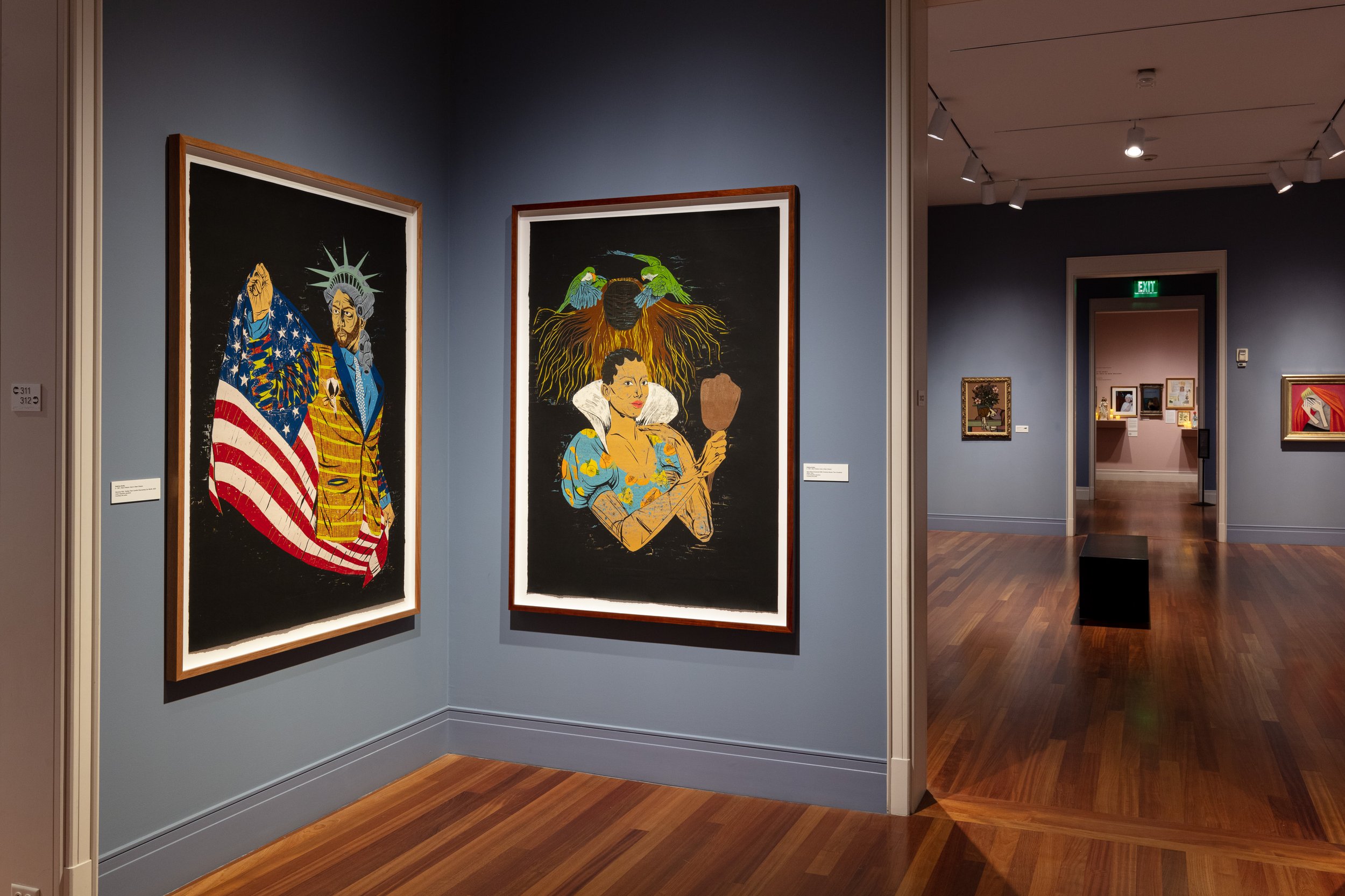
Katrina Andry, 2021. Installation view: Prospect.5: Yesterday we said tomorrow, 2021–22. Ogden Museum of Southern Art, New Orleans. Courtesy Prospect New Orleans. Photo: Jonathan Traviesa
Willie Birch
b. 1942, New Orleans
Lives in New Orleans
venue
Ogden Museum of Southern Art
925 Camp Street, New Orleans, LA 70130
Monday–Sunday, 10 AM–5 PM
neighborhood
Downtown/Central Business District (CBD)
About the project
Inspired by his native city of New Orleans, Willie Birch creates large-scale works on paper in charcoal and paint that anchor his viewers to the specificity of place. Birch’s works center on spaces and everyday objects around the New Orleans neighborhood where he lives, such as his studio and backyard, neighboring houses, power lines, and a community flowerbed. He also depicts scenes of daily life, such as roofers working on a nearby home, or the sky seen from the window of an airplane.
Birch’s works have a careful attention to detail, highlighting patterns in the natural and built environment that give his works a sense of graphic depth and speak to fractal patterns and numerology that are connected to worldviews of the African diaspora. While many of the works are notably empty of people—in part a product of the period in which they were produced, marked as it was by the Covid-19 pandemic and stay-at-home orders—they are nonetheless testaments to Black life in the city and to spaces of togetherness, individuality, ritual, celebration, domesticity, creativity, labor, and rest. While these works possess a sense of timelessness, as they depict enduring structures, some passed down among multiple generations, they are also anchored in very specific moments. In the image of Birch’s studio, we see a self-portrait in which the artist wears a protective face mask, and the drawing of the flowerbed—Memory Flowers for a Heart Broken America, January 6, 2021 (2021)—memorializes the trauma and sadness of the violent insurrection at the United States Capitol earlier this year.
About the artist
Willie Birch is a New Orleans native and one of Louisiana’s most significant living artists. He first came to prominence for his papier-maché sculptures that depicted African American men, women, and children engaged in common activities and rituals. In 1993, a John S. Simon Guggenheim Memorial Foundation Award brought him back to New Orleans, where he began producing the work he is best known for—large-scale, graphic drawings of African-American life ranging from the spectacular public gatherings—choreographed and impromptu—that define New Orleans’s cultural life to intimate individual portraits and images of the everyday. For Birch, his distinctive figurative style is founded “on deep knowledge of both the African roots of African-American culture, and the European painting tradition.” Beginning in 2000, Birch removed all color from his palette and has since then continued to explore and expand the possibilities of grisaille in bodies of work which, following Hurricane Katrina in 2005, have been focused on the urban and natural landscapes of New Orleans.
In 2006, Birch co-founded the Porch Seventh Ward Cultural Organization, that would have a deep impact on the youth of this historical neighborhood, and he also founded the Old Prieur Street Project and Community Garden in 2015, which has engaged local artists, youth groups, and community members in the preservation of the culture of one of the oldest African American neighborhoods in the city. Birch has been the recipient of many awards and fellowships, including the Guggenheim Foundation, the Pollock Krasner Foundation, The Joan Mitchell Foundation, the New York State Council on the Arts, and the National Endowment for the Arts. He was named the USA James Baldwin Fellow in 2014. Birch’s work has been included in numerous group exhibitions throughout the country and a retrospective of his work, Celebrating Freedom: The Art of Willie Birch, was organized by the Contemporary Art Center, New Orleans, in 20016 and travelled nationally.
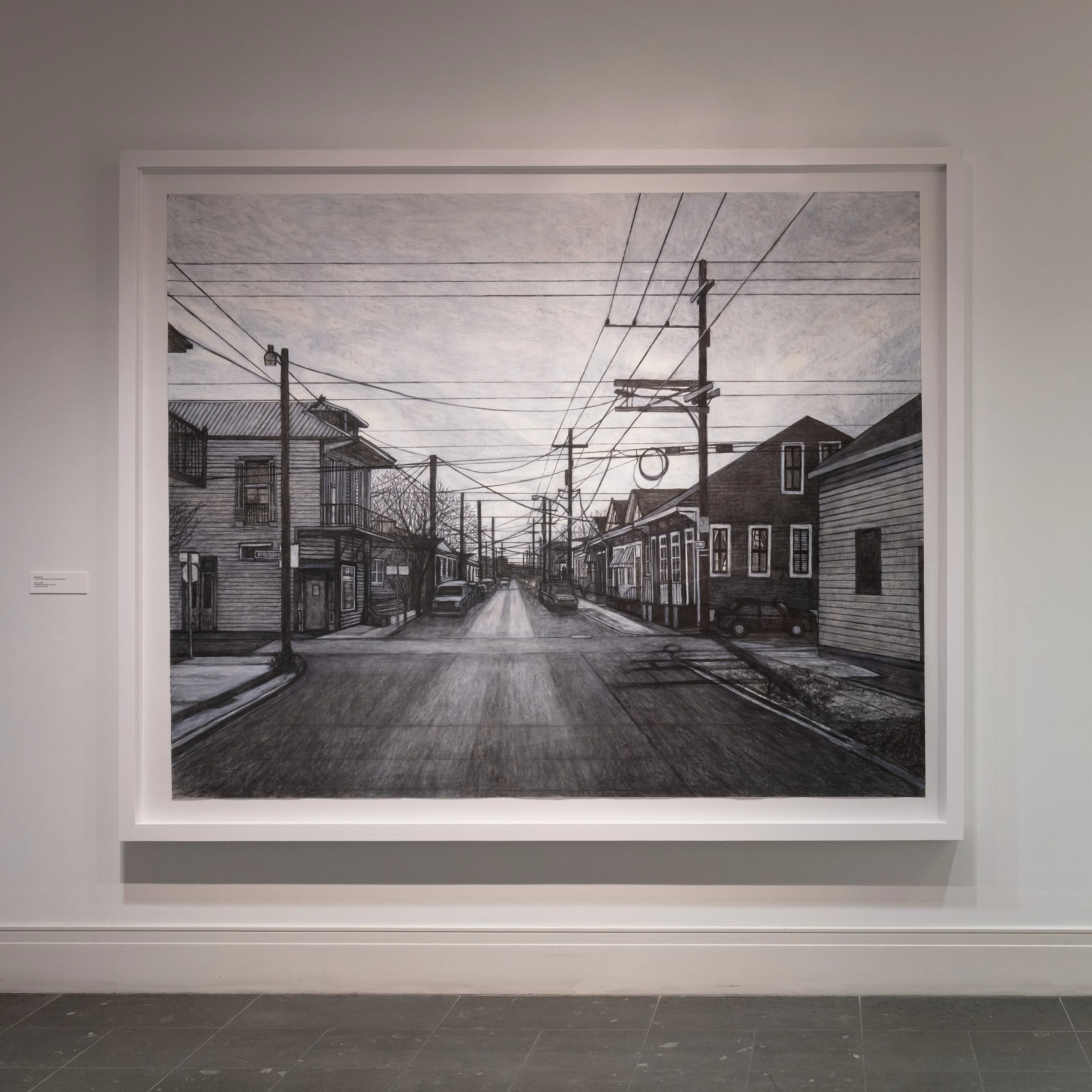
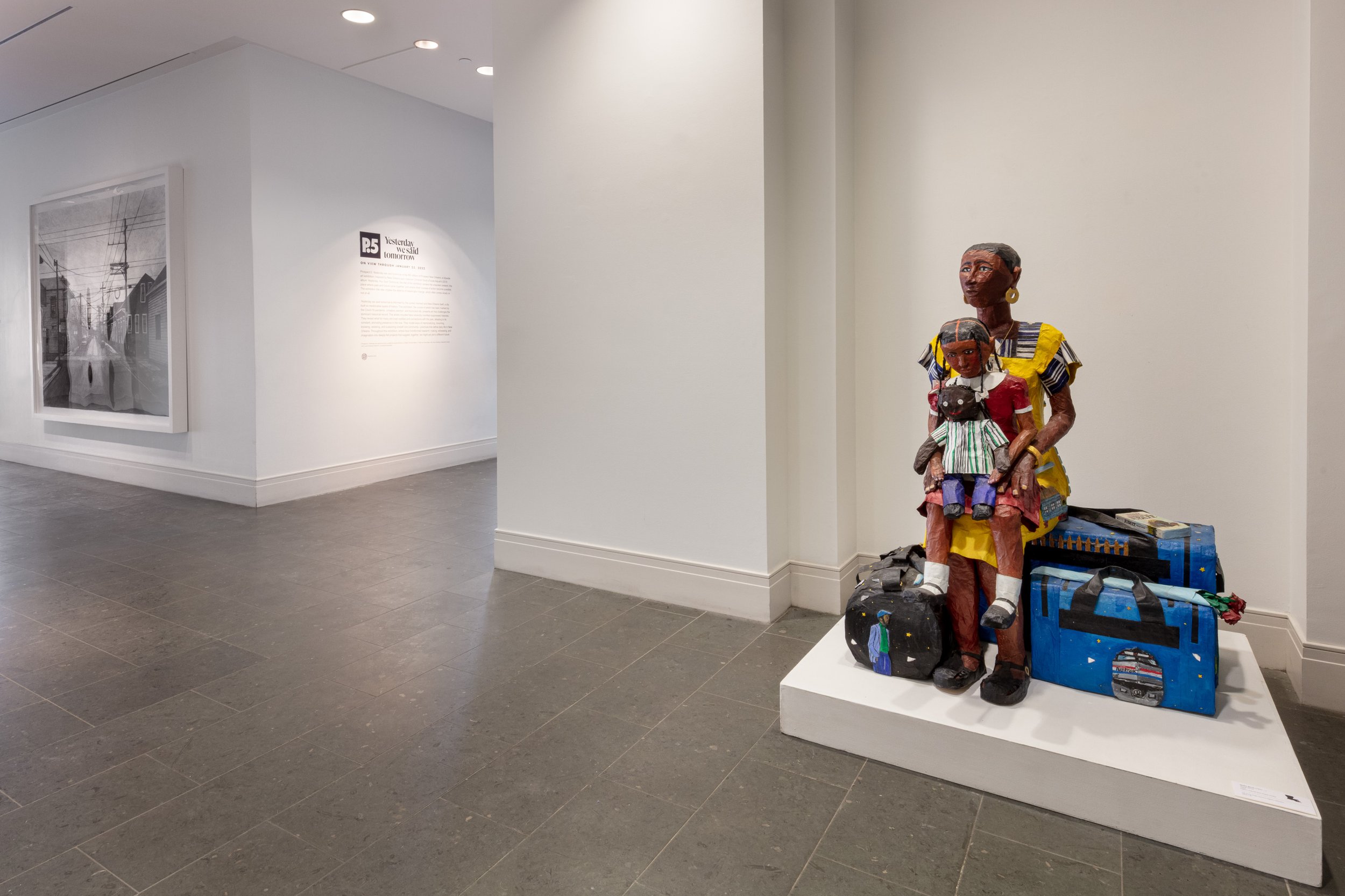
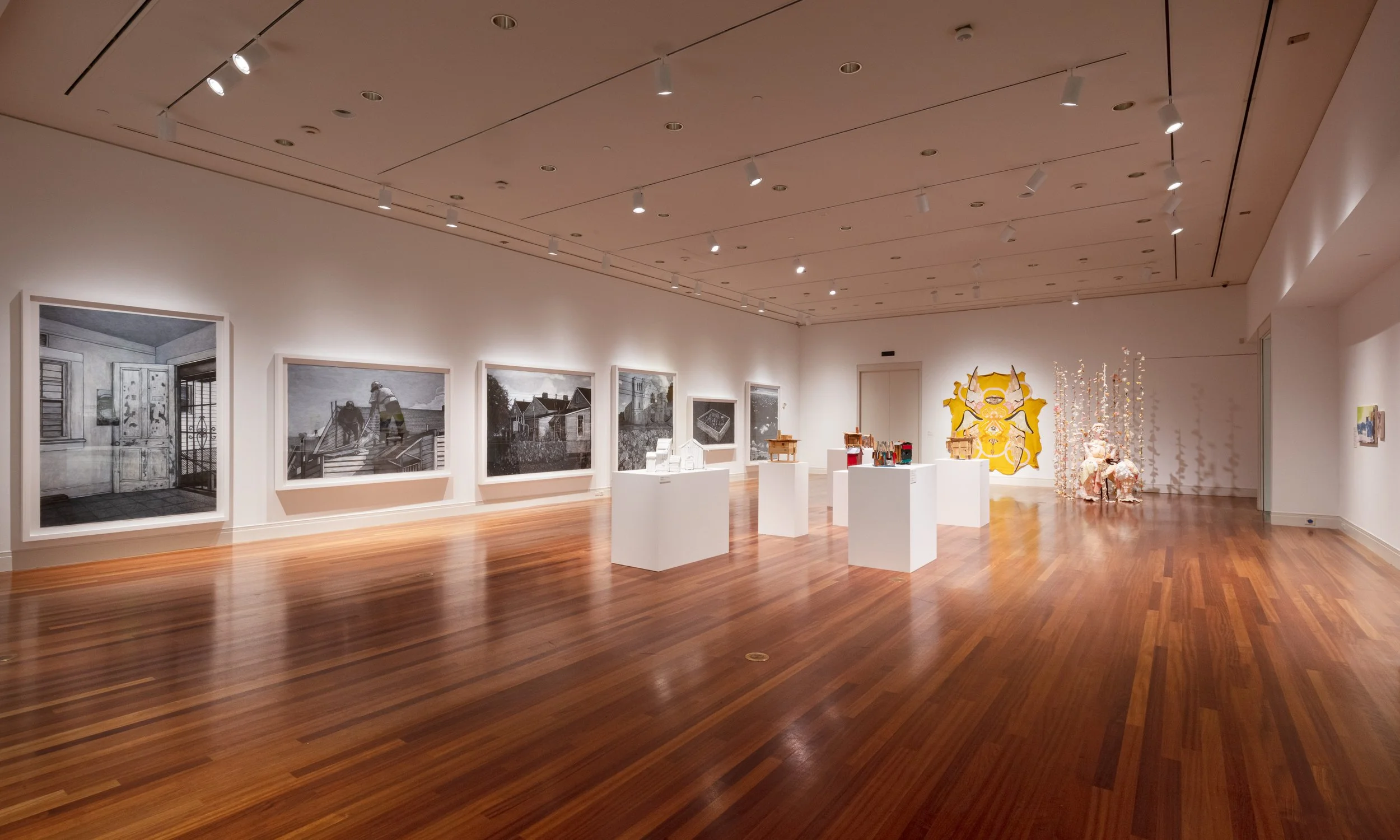
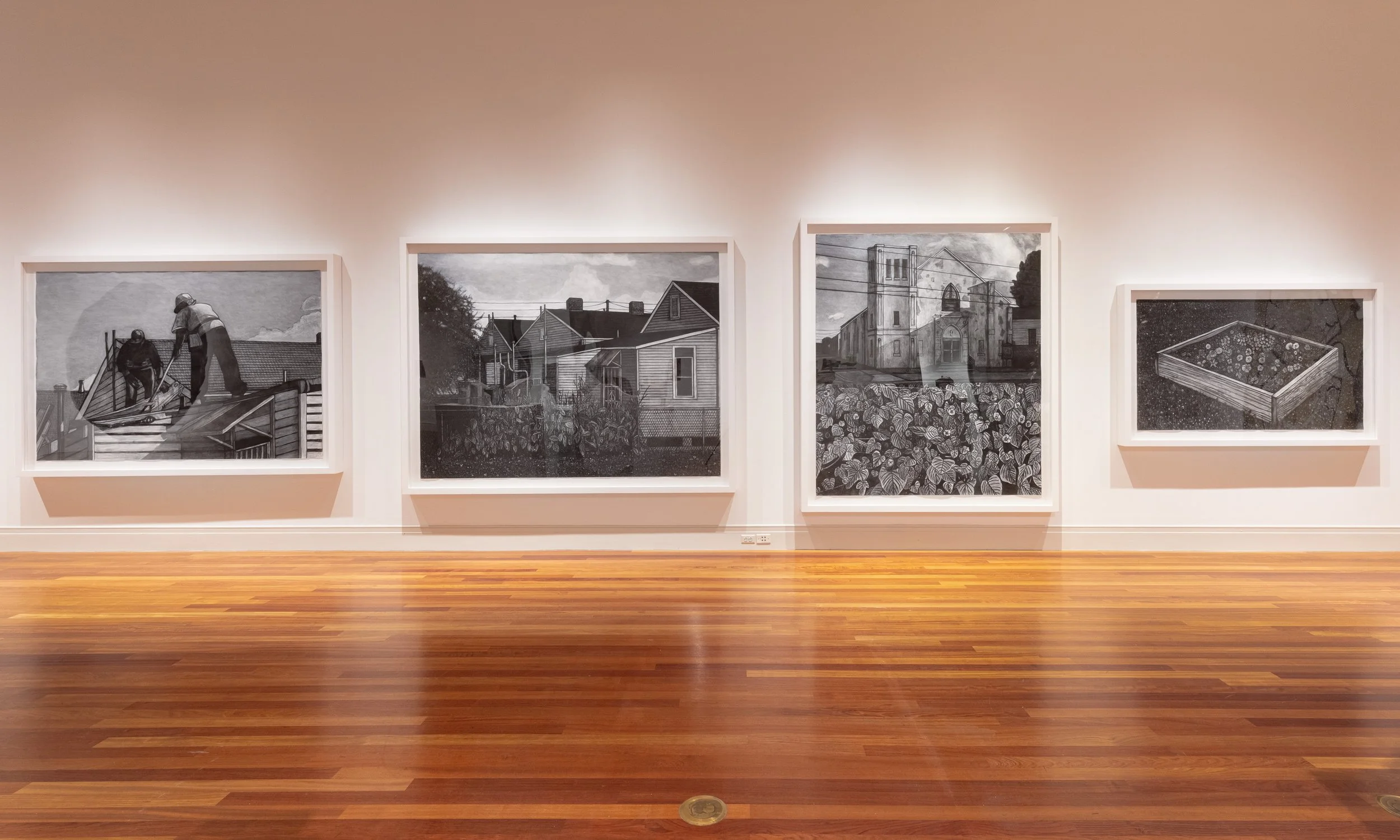

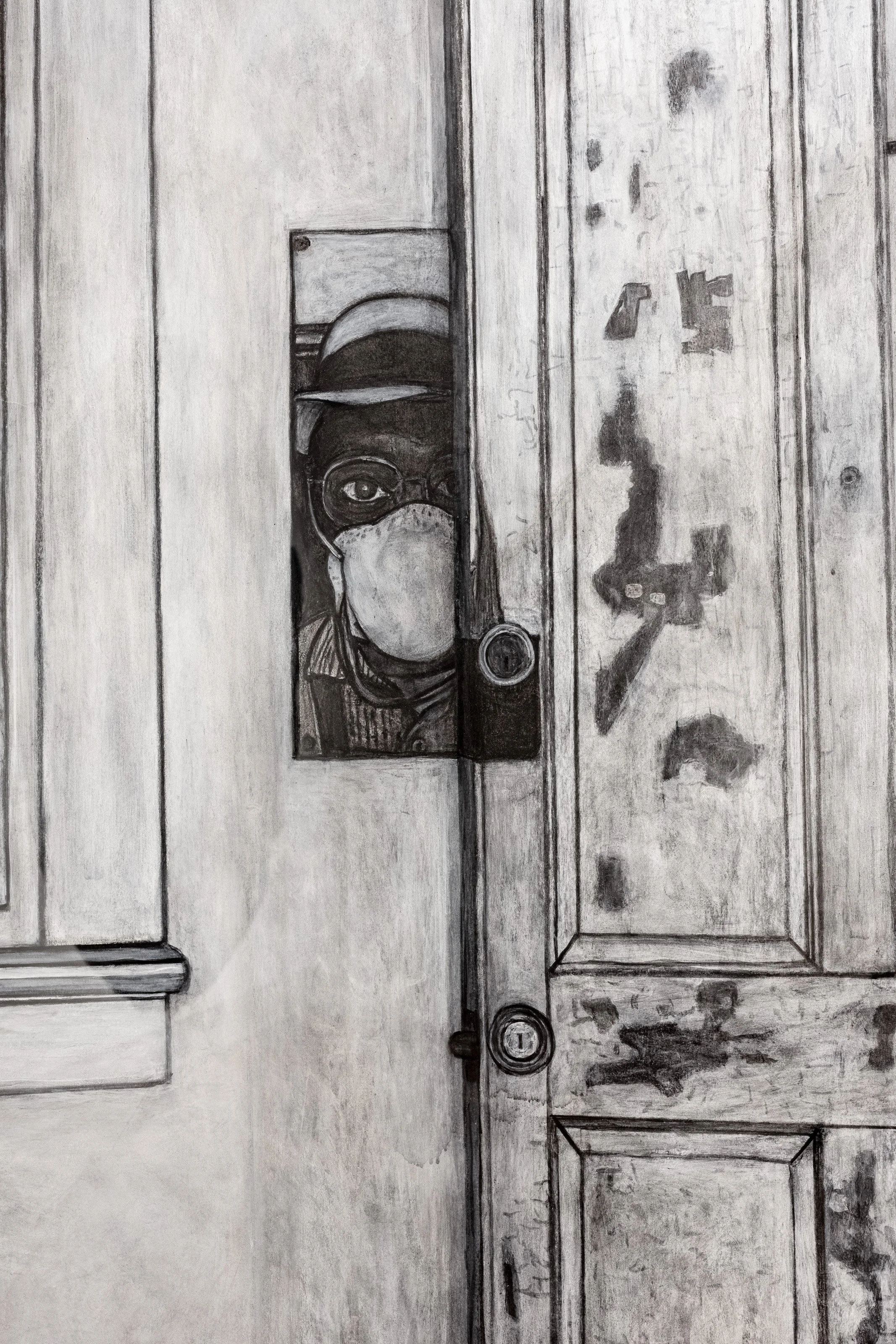
Willie Birch, 2021. Installation view: Prospect.5: Yesterday we said tomorrow, 2021–22. Ogden Museum of Southern Art, New Orleans. Courtesy Prospect New Orleans. Photos: Jonathan Traviesa.
Beverly Buchanan
b. 1940, Fuquay, North Carolina
d. 2015, Ann Harbor, Michigan
venue
Ogden Museum of Southern Art
925 Camp Street, New Orleans, LA 70130
Monday–Sunday, 10 AM – 5 PM
neighborhood
Downtown/Central Business District (CBD)
About the project
Beverly Buchanan’s small sculptures represent talismans of Southern rural Black life. Buchanan grew up in South Carolina; the daughter of a professor of agriculture, she regularly accompanied him on surveys of tenant farmers to document the rural dwellings and lifeways of the American South. These visits were foundational to Buchanan’s lifelong interest in African American vernacular practices of building and storytelling, as well as to her keen attunement to the relationships among site and history. This study materialized in her most prolific and acclaimed body of work, her shack sculptures.
Roughly assembled from humble materials like wood, cardboard, rusted metal, and painted foam core, these miniature houses are both imagined and drawn from real structures that served as domestic spaces for families and individuals. Though most of the original structures and communities do not survive, in their time, the buildings withstood the violent whims of the natural world, while their inhabitants endured the violent whims of other people in their region. Buchanan’s shacks commemorate places of return, reform, and resistance, and ask us to examine what safely, comfort, and home mean.
About the artist
Beverly Buchanan’s work centers on the character of the dwellings typical of the vernacular architecture of the South, of which she was a native, having been born and raised in the Carolinas. Originally intending to become a physician, Buchanan earned degrees in science and medical subjects. However, after earning dual master’s degrees in parasitology (1968) and public health (1969) from Columbia University, New York, she elected to pursue art rather than medical school. She was drawn to the underlying symbolism of strength and perseverance associated with the “shacks”and ruins that she painted and sculpted. For her, they were not the abject structures that others saw, but rather examples of persistence, presence, and survival. She used rudimentary materials, such as wood scraps, to create semi-abstract replicas of homes, schools, barns, and cabins. Buchanan was twice named a National Endowment for the Arts Fellow (1980, 1990) and was awarded a Guggenheim Fellowship (1980). Her work has been exhibited at the Museum of Contemporary Art, Los Angeles; the Studio Museum in Harlem, New York; The Phillips Collection, Washington, DC; Greenville County Museum of Art, South Carolina; and the Chrysler Museum of Art, Norfolk, Virginia. In 2016 her work was the subject of a comprehensive exhibition at the Brooklyn Museum, Beverly Buchanan–Ruins and Rituals.
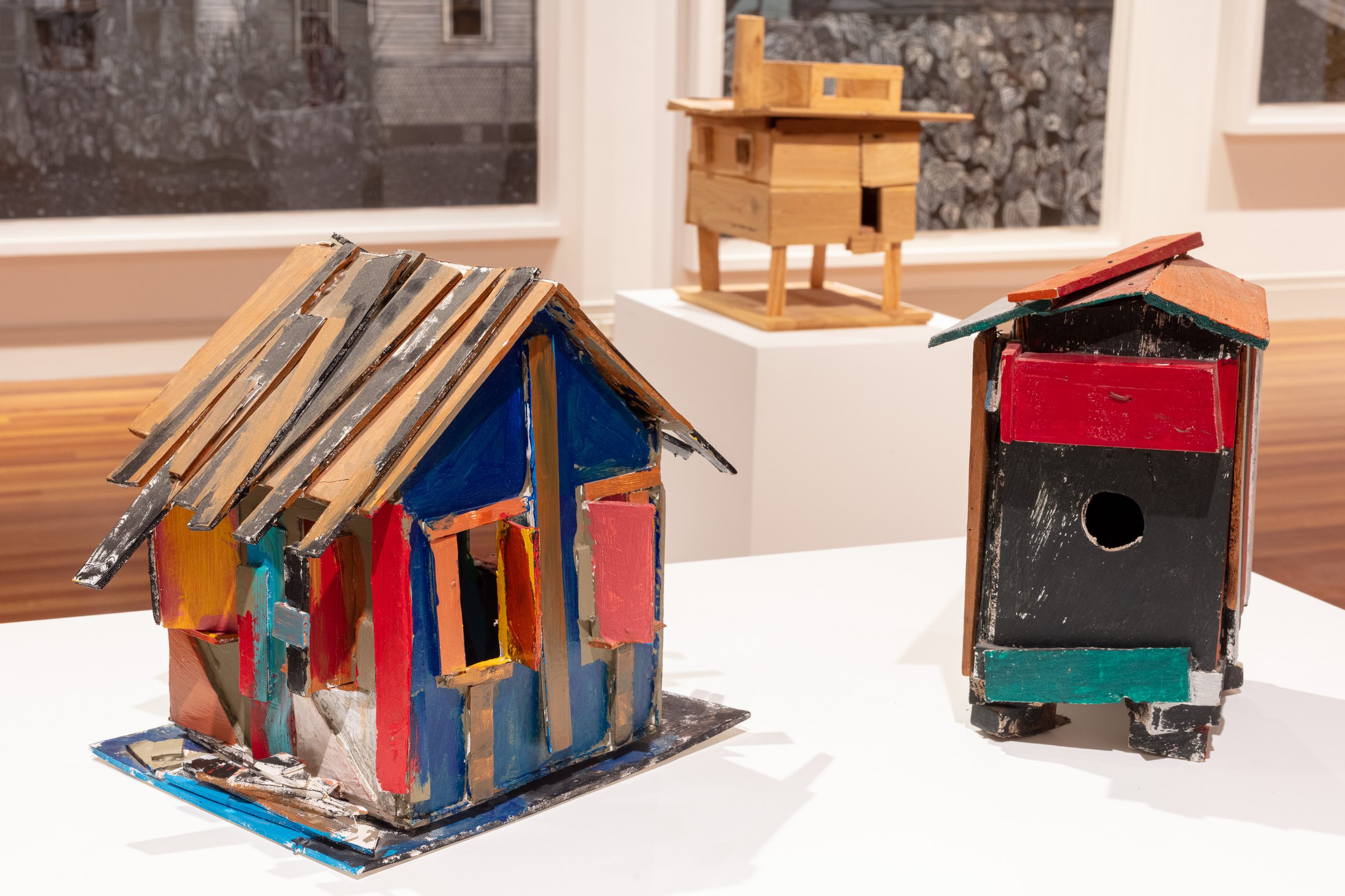
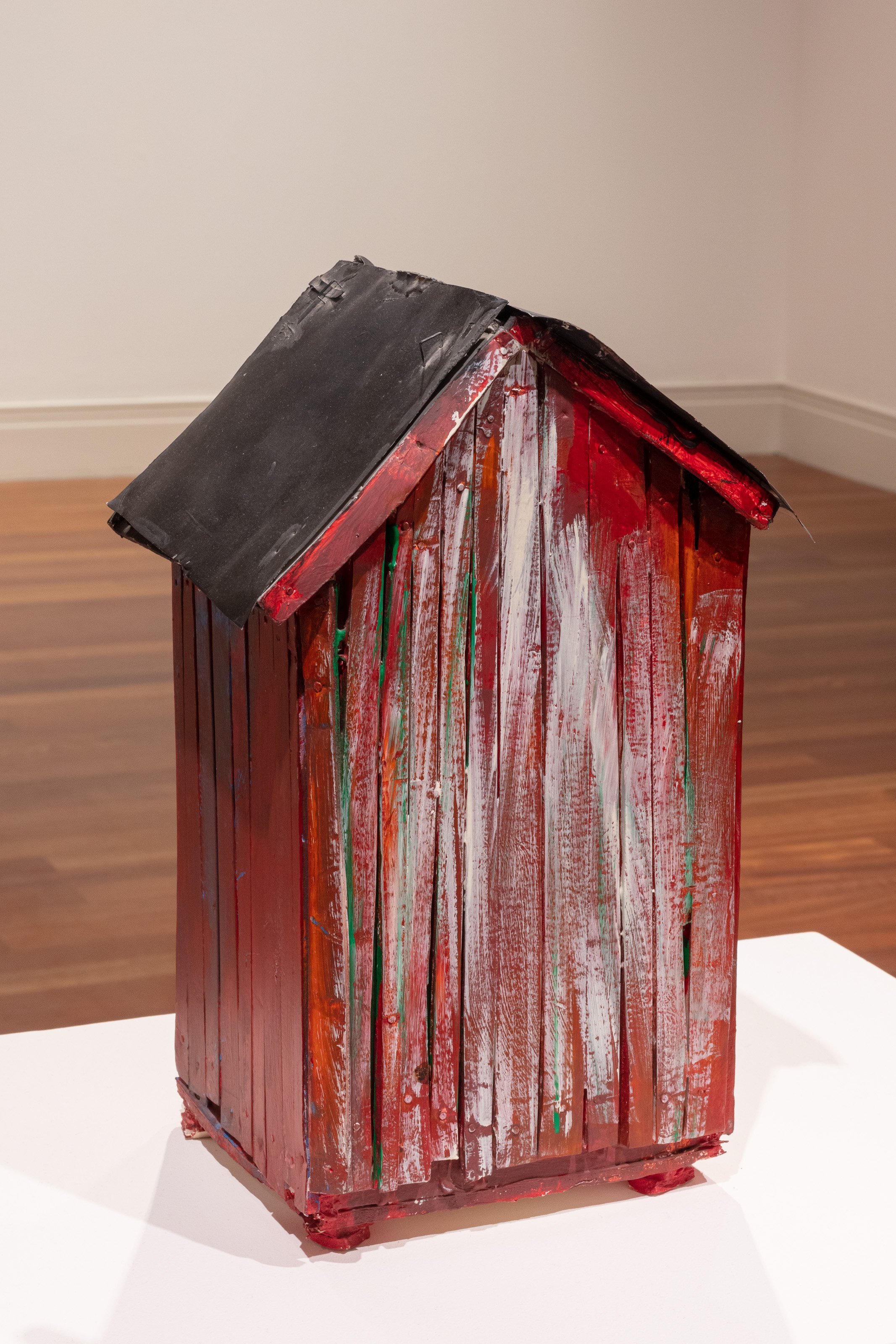
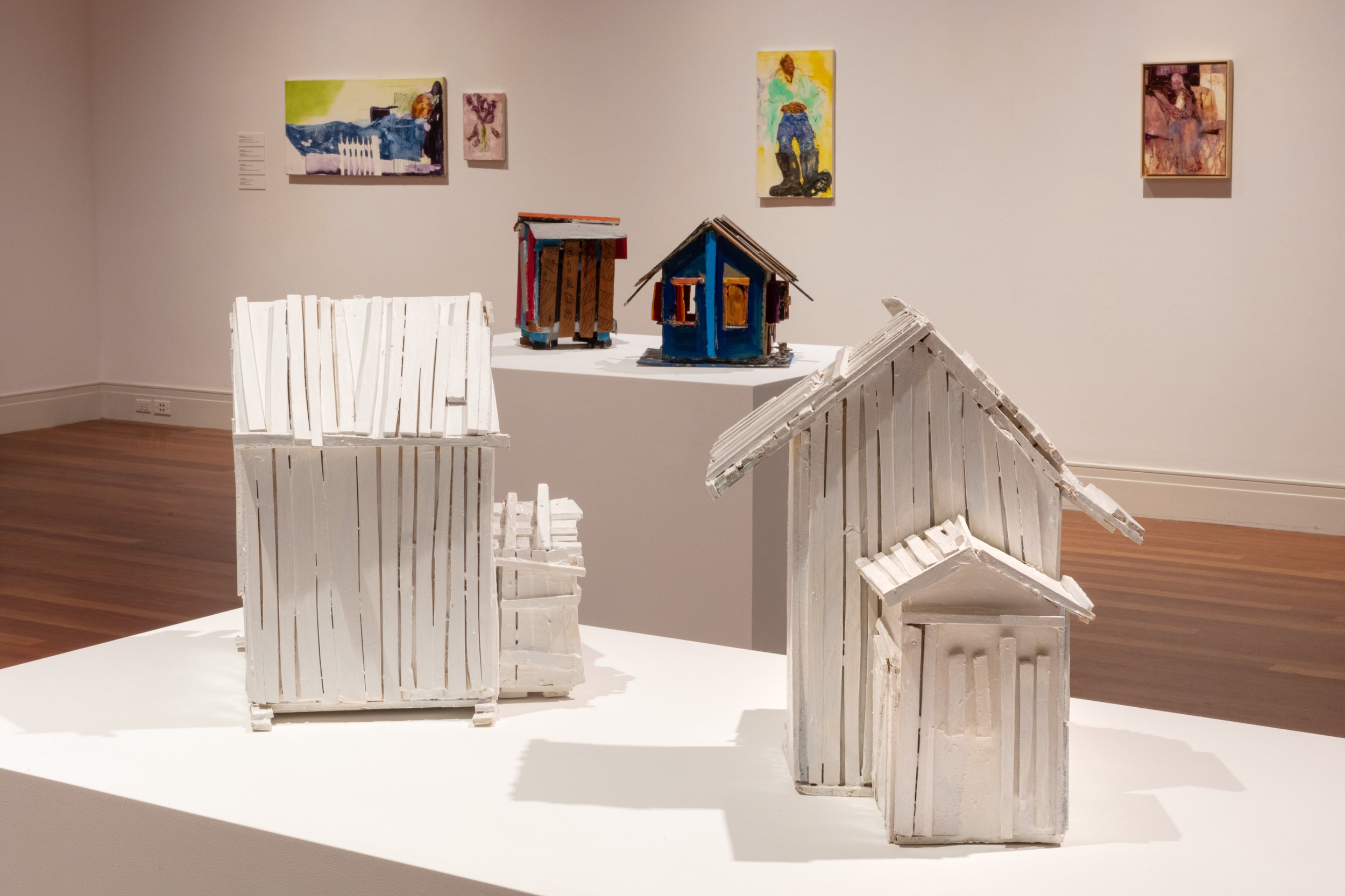
Beverly Buchanan, 2021. Installation view: Prospect.5: Yesterday we said tomorrow, 2021–22. Ogden Museum of Southern Art, New Orleans. Courtesy Prospect New Orleans. Photo: Jonathan Traviesa
Celeste Dupuy-Spencer
b. 1979, New York
Lives in Los Angeles
Venue
Ogden Museum of Southern Art
925 Camp Street, New Orleans, LA 70130
Monday–Sunday, 10 AM – 5 PM
Neighborhood
Downtown/Central Business District (CBD)
About the project
The work of Celeste Dupuy-Spencer grapples with the subtle and horrific violence of white supremacy in the United States through history painting, of a past both real and imagined. The suite of paintings on view here are fantastical depictions of this reality envisioned across time. They range from the retelling of a New Testament story about demons to an image of military conquest, from revealing the intertwined nature of whiteness and Christianity to scenes of the end of the world. Notably, Don’t You See That I Am Burning was painted following the insurrection at the United States Capitol on January 6, 2021. This wild, detailed painting references historical works as well as images drawn directly from news coverage of this event. In looking across centuries and into the future, Dupuy-Spencer asks us to contend with the legacies of terror and violence that birthed this nation, forged its ideology, and continue to shape our political and social lives.
In addition to large-scale, grandiose history paintings, Dupuy-Spencer also paints portraits, scenes of everyday life, and landscapes. The artist has family from New Orleans, and she spent time in the city during her formative years. Her intimate knowledge of the area is conveyed in the painting hung just outside this gallery, Lake Pontchartrain Causeway (2017), which captures this local landmark and the roiling skies that can lay low over the city, recasting the water and light that surrounds the bridge into a surreal setting.
About the artist
Celeste Dupuy-Spencer is an American painter, born in New York, and now residing in Los Angeles via New Orleans. Dupuy-Spencer’s paintings depict both mundane glimpses of life: intimate moments with a partner, meals shared with family, portraits of friends in informal settings, all captured with snapshot-like quality, as well as epic scenes of religious transformation and fantastical scenes of destruction. Her paintings possess enormous depth and life, transforming routine moments into compelling statements, and making palpable the terror and spectacle of violence. Many layers of storytelling leap from the canvas as viewers are brought into the ecstatic and critical lenses with which Dupuy-Spencer views her subjects, which include her family and ancestral ties to New Orleans. Her work often addresses entrenched American narratives and values, taking on––often from a personal standpoint––questions of religion, race, and privilege. Her work has appeared in major group exhibitions including the Whitney Biennial 2017, Whitney Museum of American Art, New York, and Made in L.A. 2018, Hammer Museum, Los Angeles. She has had solo exhibitions at Marlborough Contemporary, New York and Nino Mier Gallery, Los Angeles, and will have a 2020 solo exhibition at Galerie Max Hetzler, Berlin. Dupuy-Spencer received a BFA from Bard College, Annandale-on-Hudson, New York (2007).
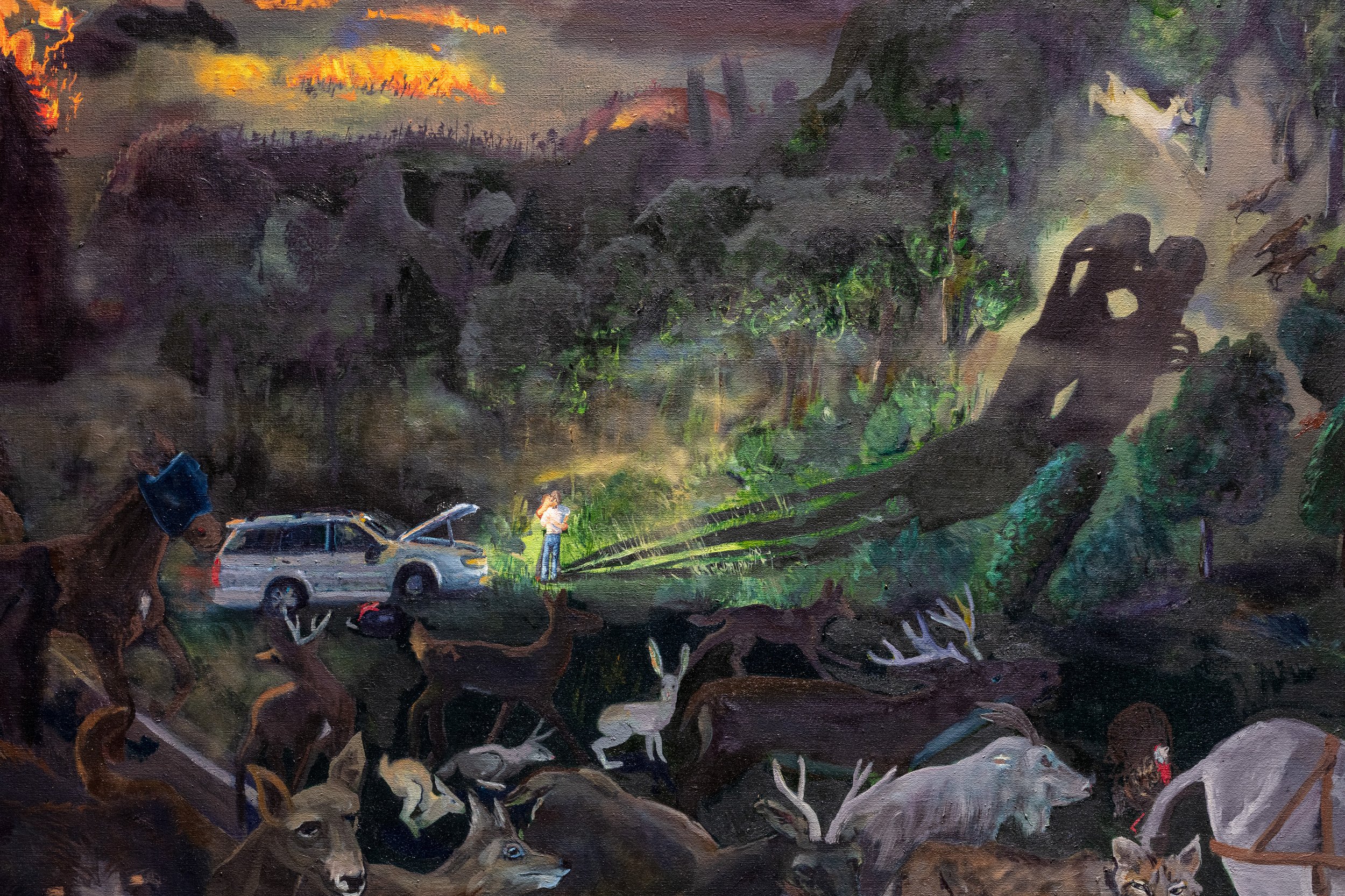
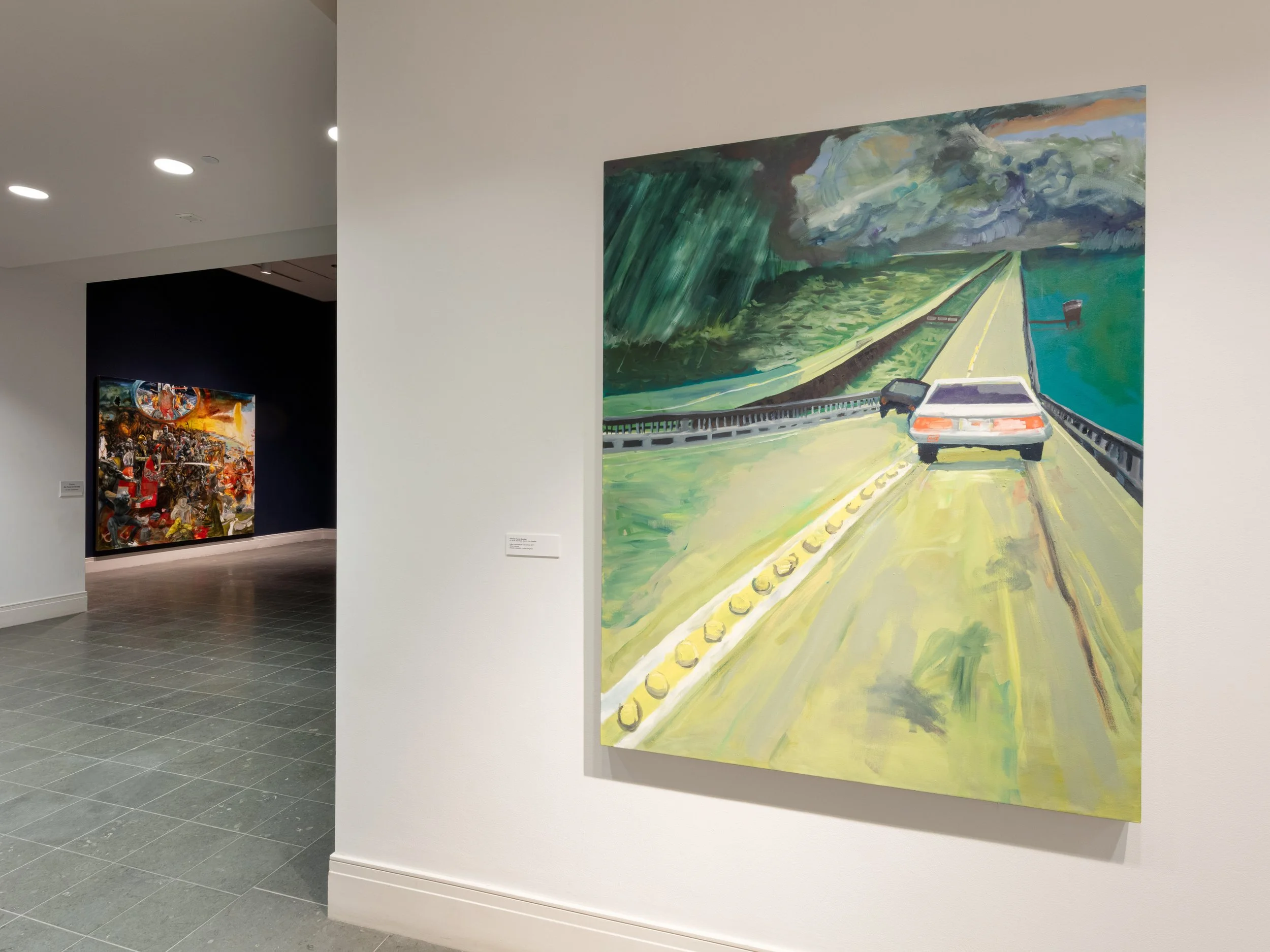
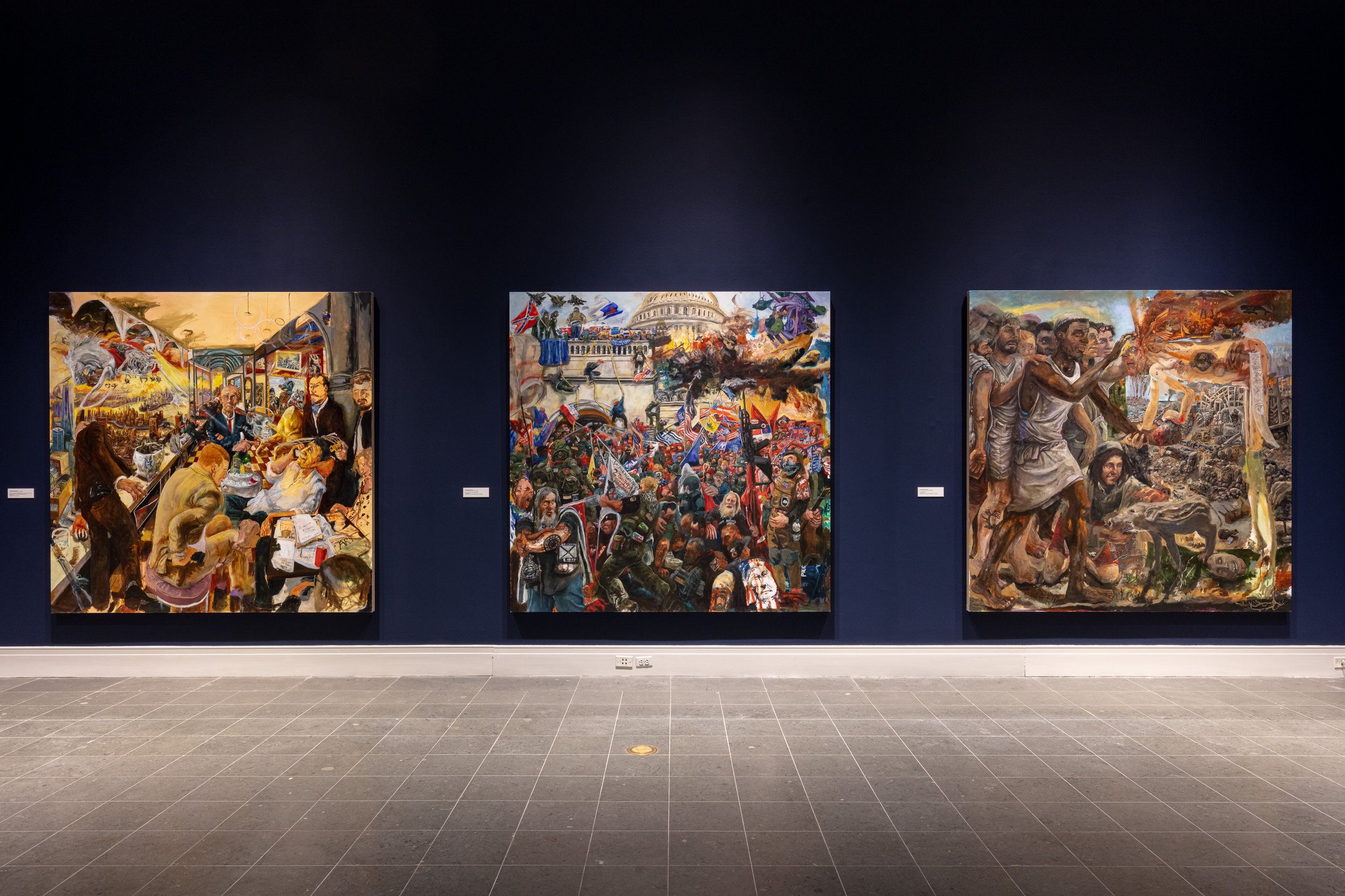
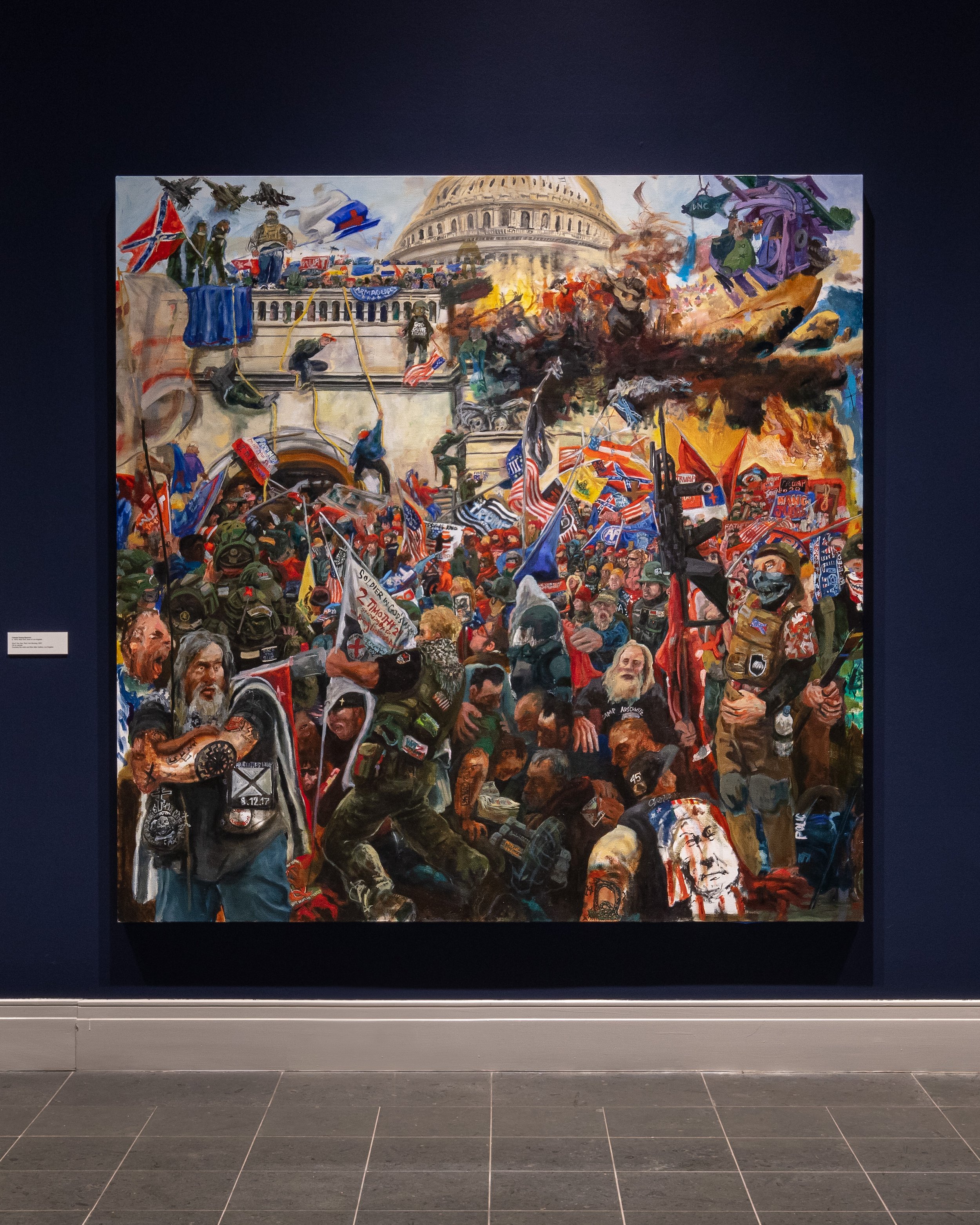
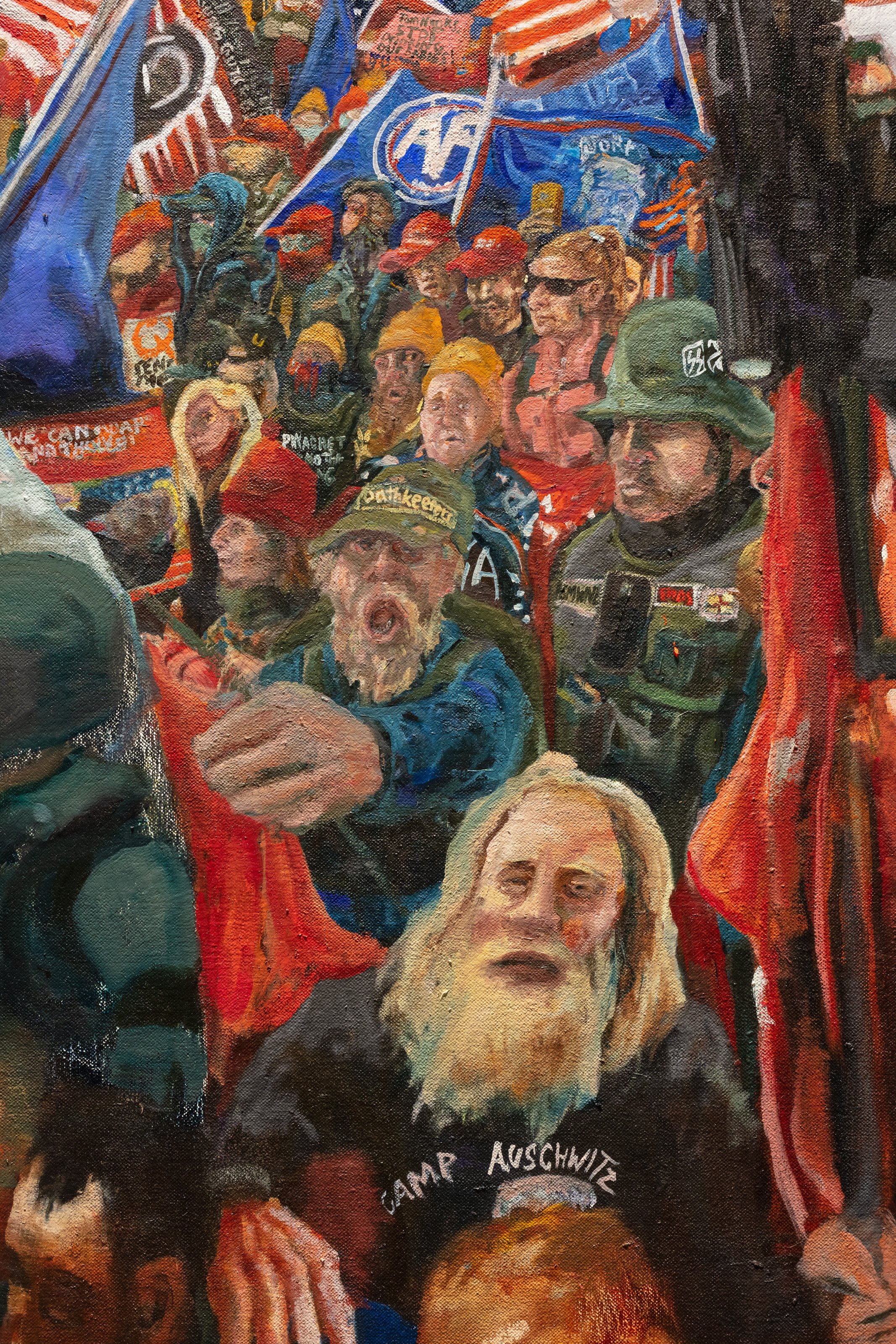
Celeste Dupuy-Spencer, 2021. Installation view: Prospect.5: Yesterday we said tomorrow, 2021–22. Ogden Museum of Southern Art, New Orleans. Courtesy Prospect New Orleans. Photo: Jonathan Traviesa
Jennie C. Jones
b. 1968, Cincinnati
Lives in Hudson, New York
Venue
Ogden Museum Of Southern Art
925 Camp Street, New Orleans, LA 70130
Monday–Sunday, 10 AM–5 PM
Neighborhood
Downtown/Central Business District (CBD)
About the project
High as the Listening Skies, 2021
Sound, 4 min., 45 sec.
The Edges of Heaven, Rest, 2021
Sound, 2 min., 58 sec.
For Prospect.5, Jennie C. Jones has created two sound works that play throughout the day and resound off the architecture of the Ogden Museum of Southern Art’s Patrick F. Taylor Library. The first composition, High as the Listening Skies, features three choirs from Houston, Los Angeles, and Baltimore performing “A City Called Heaven.” The song was popularized by Mahalia Jackson, who was born in New Orleans in 1911 and is considered to be one of the most important gospel singers and Black liberation activists of her time. This song, while nondenominational, presents heaven as a Black utopia, and as something that is to be constantly strived for and sought after. The choirs are intentionally layered into an irregular harmony that strikes a moving balance of tenacity, repetition, joy, and chaos. The Edges of Heaven, the second piece, incorporates a tone associated with energetic healing to create a sound that evokes sensations that are both tender and somber. Jones layered the tone with samples from a composition by Alvin Singleton, a Black composer who is known for merging the worlds of jazz and symphony. In contrast to the exuberance of High as the Listening Skies, this track suggests an enduring calm.
With the sound emanating overhead, these pieces that remain beyond our grasp, centered on high and out of sight, evoking other worlds and spaces. They offer the transcendent possibilities of sound and music, creating a space for lingering pause and collective listening. These works invite reflection on Black histories and futures through a consideration of earthly and spiritual possibility.
Presented by the Ed Bradley Foundation.
about the artist
Jennie C. Jones sculpts, paints, and composes on the themes of African American history and jazz, in its broadest definition, within the frameworks of minimalism and abstraction. Her works represent sharp critiques of current political, cultural, and social conditions, such as her commentary on the lack of African American presence in the tradition of modernism. Jones’s works reveal the exchange between the physical properties of black sonic practices and the musical properties of visual abstraction. She has earned numerous accolades and awards, including the Robert Rauschenberg Award from the Foundation for Contemporary Art (2016), the Joan Mitchell Foundation Award (2013), and the Studio Museum in Harlem’s Joyce Alexander Wein Prize (2012). Jones’s work can be found in the permanent collections of the Museum of Modern Art, New York; Solomon R. Guggenheim Museum, New York; Los Angeles County Museum of Art; and the Hirshhorn Museum and Sculpture Garden, Washington, DC. Jones earned a BFA from the School of the Art Institute of Chicago (1991) and an MFA from Rutgers University, New Jersey (1996). Jones also studied at the Skowhegan School of Painting and Sculpture, Maine. She is on the faculty of the MFA program at Bard College, Annandale-on-Hudson, New York, and 2020 faculty at Yale Norfolk School of Art, Connecticut.
Jennie C. Jones, 2021. Installation view: Prospect.5 Yesterday we said tomorrow, 2021–22. Ogden Museum of Southern Art, New Orleans. Video: Jonathan Traviesa
Tau Lewis
b. 1993, Toronto
Living in Toronto
Venue
Ogden Museum of Southern Art
925 Camp Street, New Orleans, LA 70130
Monday–Sunday, 10 AM–5 PM
Neighborhood
Downtown/Central Business District (CBD)
About the project
Tau Lewis focuses on the potential of birth and rebirth of objects and individuals. Created during the pandemic, utilizing reused and recycled fabrics, the works on view imagine life protected by environments infused with love and compassion.
Surrounded by hand-sewn garlands of flowering buds, her quilted sculpture, Delight—a seated, outreaching figure—is part of a series of soft sculptures that make up T.A.U.B.I.S., the Triumphant Alliance of Ubiquitous Blossoms of Incarnate Souls. Invented by Lewis, T.A.U.B.I.S. is the name of both an alternate realm and the beings who inhabit it. In T.A.U.B.I.S., each hand-dyed blossom represents a soul who has lived to the best of their ability—they communicate and collect intel and offer guidance and foresight, and sometimes song and dance. The figure in Delight is one of several non-gendered maternal forms that—through intuitive nurturing, wisdom, and connection to the terrain—supports all life.
On both sides of the gallery hang Lewis’s tapestries that are talismans imbued with powers of protection and healing. Each quilted tapestry features and is named after a Ghanaian Adinkra symbol—ancient symbols that encompass West African concepts and worldviews and appear throughout the African diaspora, visible for instance in the wrought-iron works of New Orleans. Lewis’s utilization of Adinkra symbols points to the persistent presence of African peoples and cultures. They are used—as in the blossoms that surround Delight—to encase and protect the symmetrical fetuses unfolding at the center of the work. These wall-based works investigate the cyclical nature of life and the potential to rest in the certainty (and uncertainty) of our continued existence.
Presented by the Blue Rider Group and the Deborah Buck Foundation.
about the artist
Tau Lewis is a self-taught multimedia artist who primarily works with textiles, carving, and assemblage of found objects. Her intention in her use of recycled and found materials is to invoke the necessity of such practices in various cultures and contexts. There is a therapeutic and cathartic element to her work in that it references past personal and collective traumas and acknowledges the restorative power of labor. She also often references her heritage and recounts real and imagined ancestral histories. In 2018 Lewis was awarded Frieze New York’s Frame Stand Prize for her solo presentation with Toronto’s Cooper Cole Gallery. Recent and upcoming solo and group exhibitions of Lewis’s work have been hosted by, among others, The Hammer, Los Angeles; Oakville Galleries, Oakville, Ontario; The Hepworth Wakefield, UK; New Museum of Contemporary Art, New York; MoMA PS1, New York; Atlanta Contemporary Art Center; Plug In Institute of Contemporary Art, Winnipeg; and the Agnes Etherington Art Centre, Kingston, Ontario. Lewis’s work can be found in the collections of the National Gallery of Canada Library and Archives, Ottawa, and the Grinnell College Museum of Art, Iowa.
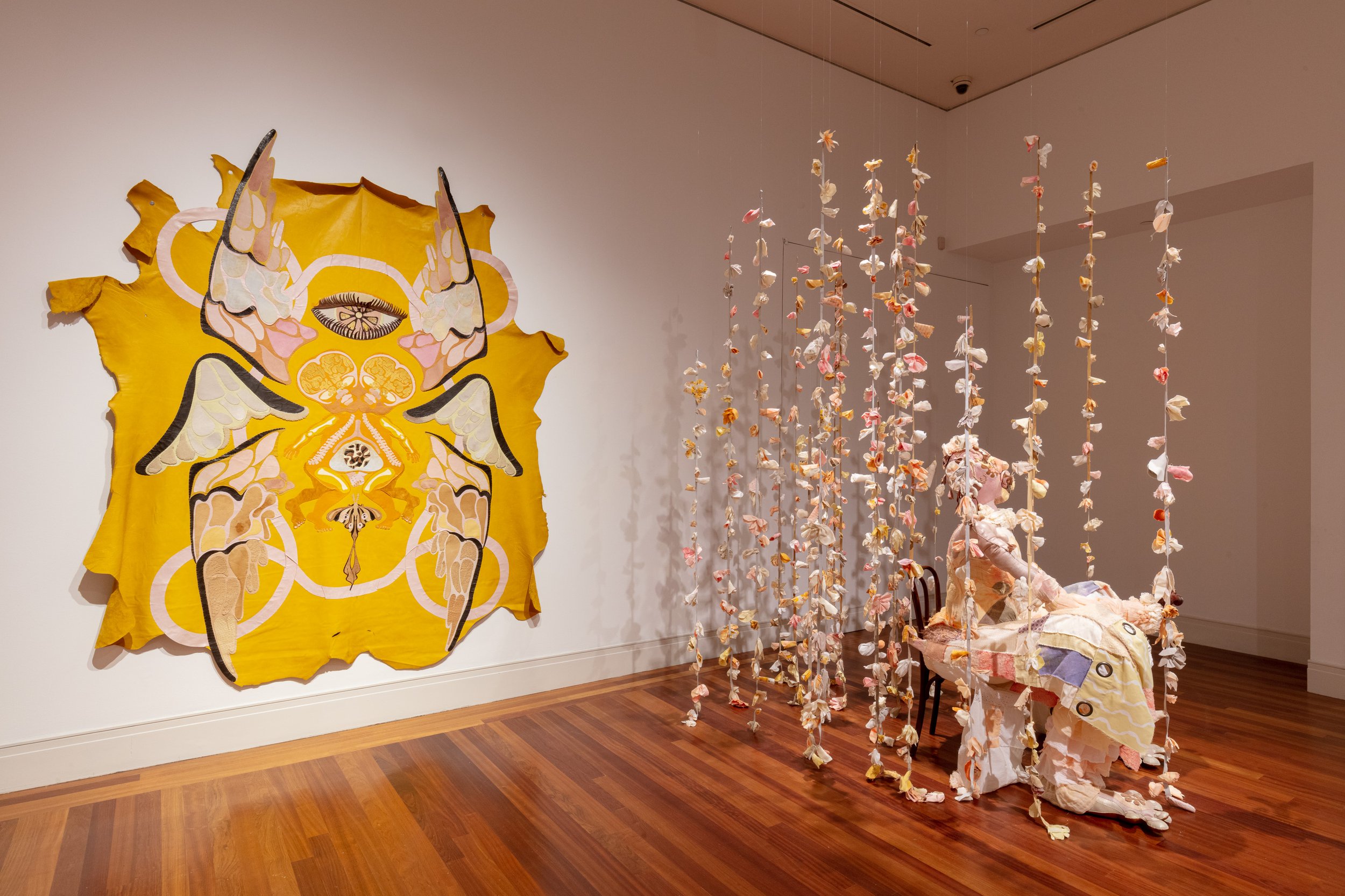
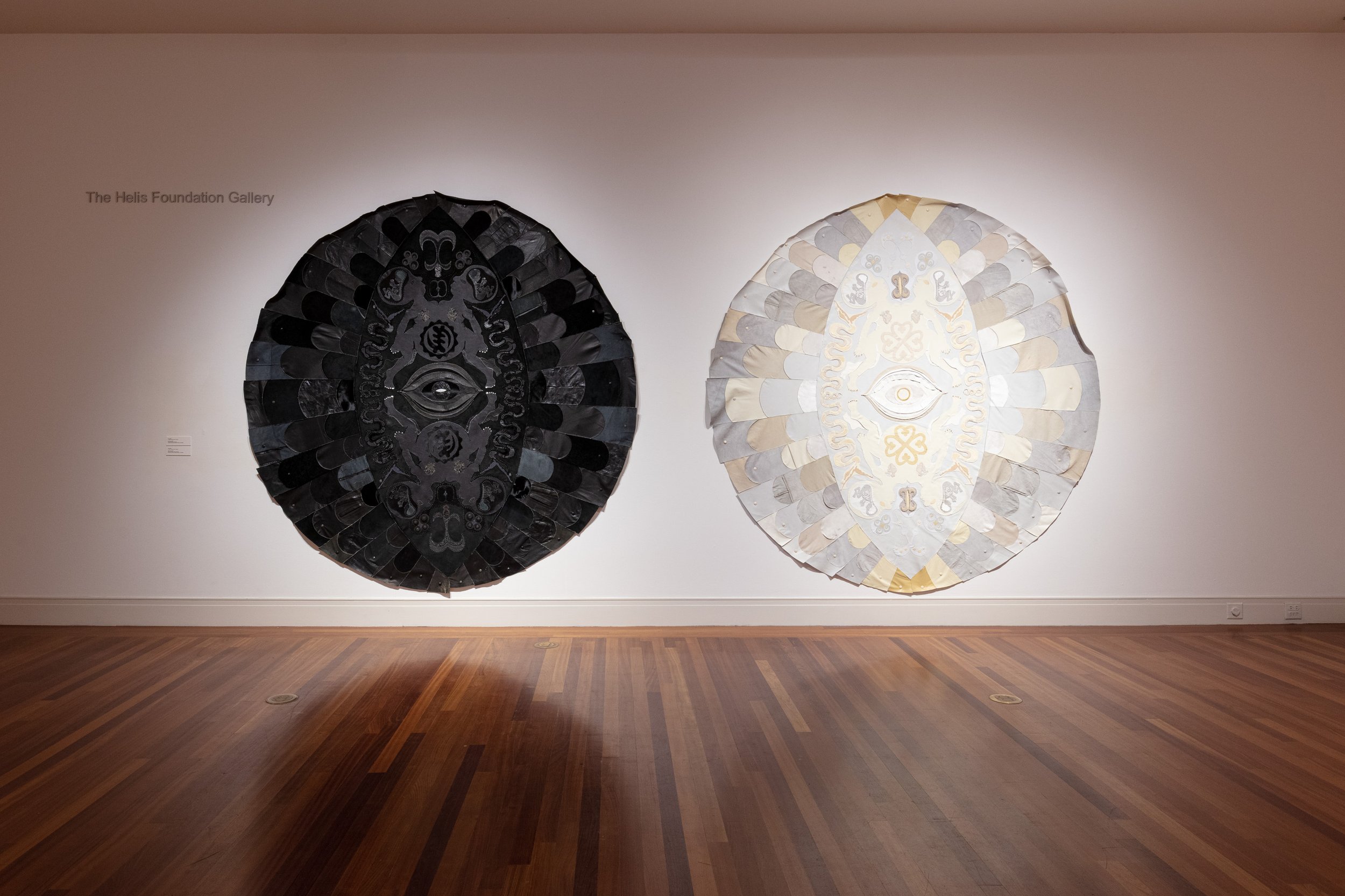
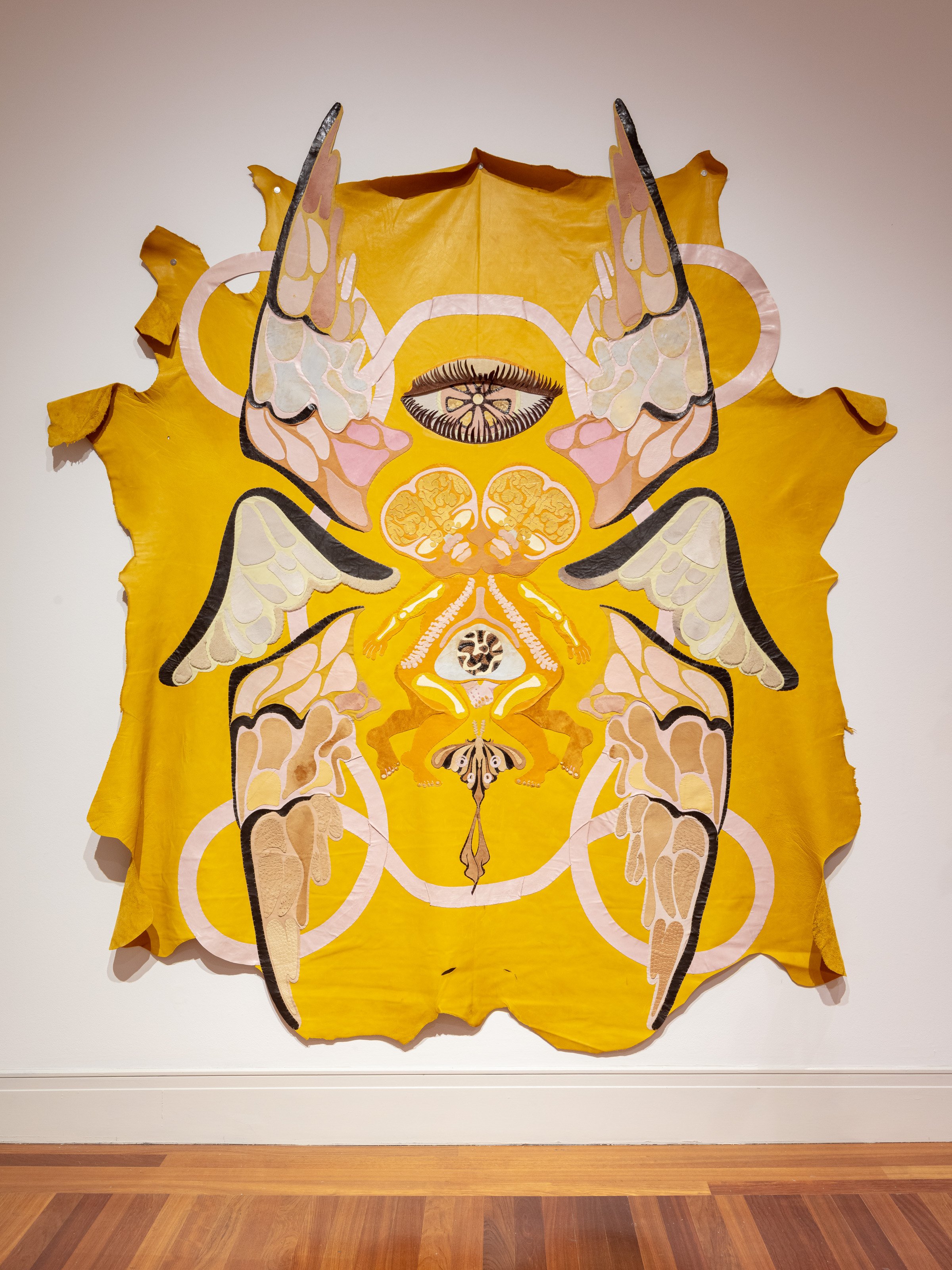

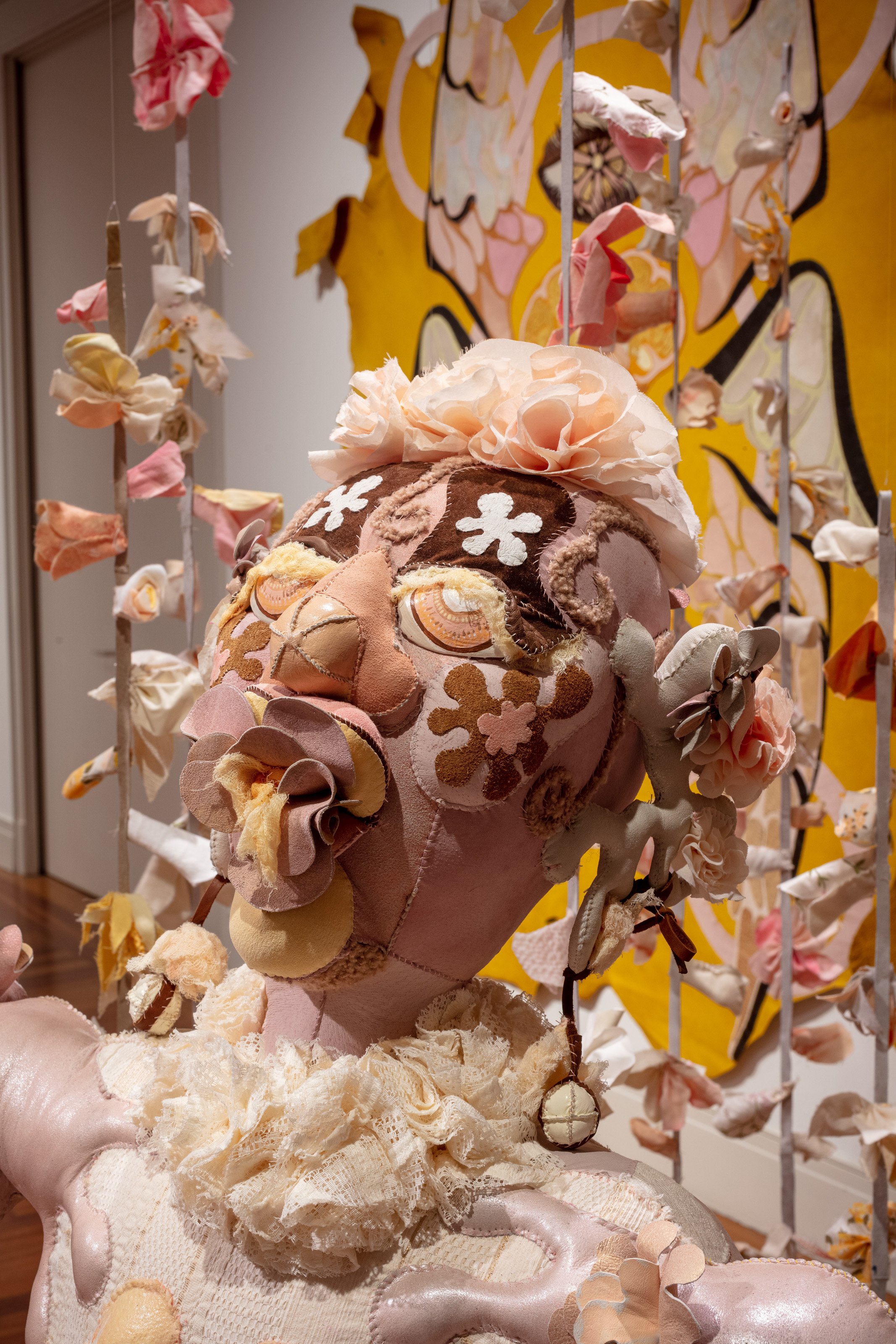
Tau Lewis, 2021. Installation view: Prospect.5: Yesterday we said tomorrow, 2021–22. Ogden Museum of Southern Art, New Orleans. Courtesy Prospect New Orleans. Photo: Jonathan Traviesa
Glenn Ligon
b. 1960, New York
Lives in New York
venue
Ogden Museum of Southern Art
925 Camp Street, New Orleans, LA 70130
Monday–Sunday, 10 AM–5 PM
neighborhood
Downtown/Central Business District (CBD)
About the project
For Prospect.5, Glenn Ligon has produced a series of seven neon sculptures that identify dates in 2017, 2020, and 2021 when eight confederate monuments were removed from public view in New Orleans. For decades, activists, citizens, and select politicians have fought for the removals of these monuments that opponents—who argue that the monuments represent testaments to US history—see as controversial. Those in favor of removing the monuments reject a presentation of US history that ultimately upholds white supremacy.
On April 24, 2017, the city removed an obelisk commemorating the Battle of Liberty Place. Erected in 1891, the obelisk honored an attempted insurrection by the Crescent City White League against the racially integrated Reconstruction Era Louisiana state government. On May 19, 2017, the city removed a statue of Robert E. Lee, arguably the most significant of these monuments. These two monuments were taken down by government order and removed discreetly. By contrast, monuments removed in summer 2020 were taken down in broad daylight by the people of New Orleans as part of nationwide protests against racial injustice. These monuments commemorated Charles Didier Dreux—the first confederate soldier killed in the Civil War—and John McDonogh, a merchant whose monument and legacy the city exploited to reinforce racial segregation and hierarchies in public schools.
This installation is sited near Tivoli Circle, where the Robert E. Lee monument once stood, and where an empty pedestal still looms as a continued reminder of the history and future possibilities for of this public space. Ligon’s painted neon works underscore the progress that has been made and invite us to reconsider the terms of monumentality by centering removal.
Presented by the Andrew W. Mellon Foundation, the Open Society Foundations, and Hauser & Wirth.
about the artist
Glenn Ligon earned a BA from Wesleyan University, Middletown, Connecticut. He works in several mediums, such as painting, printmaking, and neon. Ligon’s work is intertextual, drawing on writings from such diverse authors and figures as Richard Pryor, Gertrude Stein, James Baldwin, and Walt Whitman. His practice explores themes pertinent to the current and historical American experience, specifically the narratives and legacies of slavery, the civil rights movement, and the climate of antiblackness in the United States. Ligon’s work has been featured in exhibitions at the Whitney Museum of American Art, New York; Tate Modern; London, San Francisco Museum of Modern Art; the Studio Museum in Harlem, New York; and Museum of Modern Art, New York, among others. He has twice exhibited at the Venice Biennale (2015 and 1997). Ligon has received numerous awards and accolades, such as the Smithsonian Archives of American Art Archives of American Art Medal (2017), International Association of Art Critics Award (2012), the Skowhegan Medal for Painting (2006), John Simon Guggenheim Memorial Foundation Guggenheim Fellowship (2003) and grants from the National Endowment for the Arts (1991, 1989, and 1982).


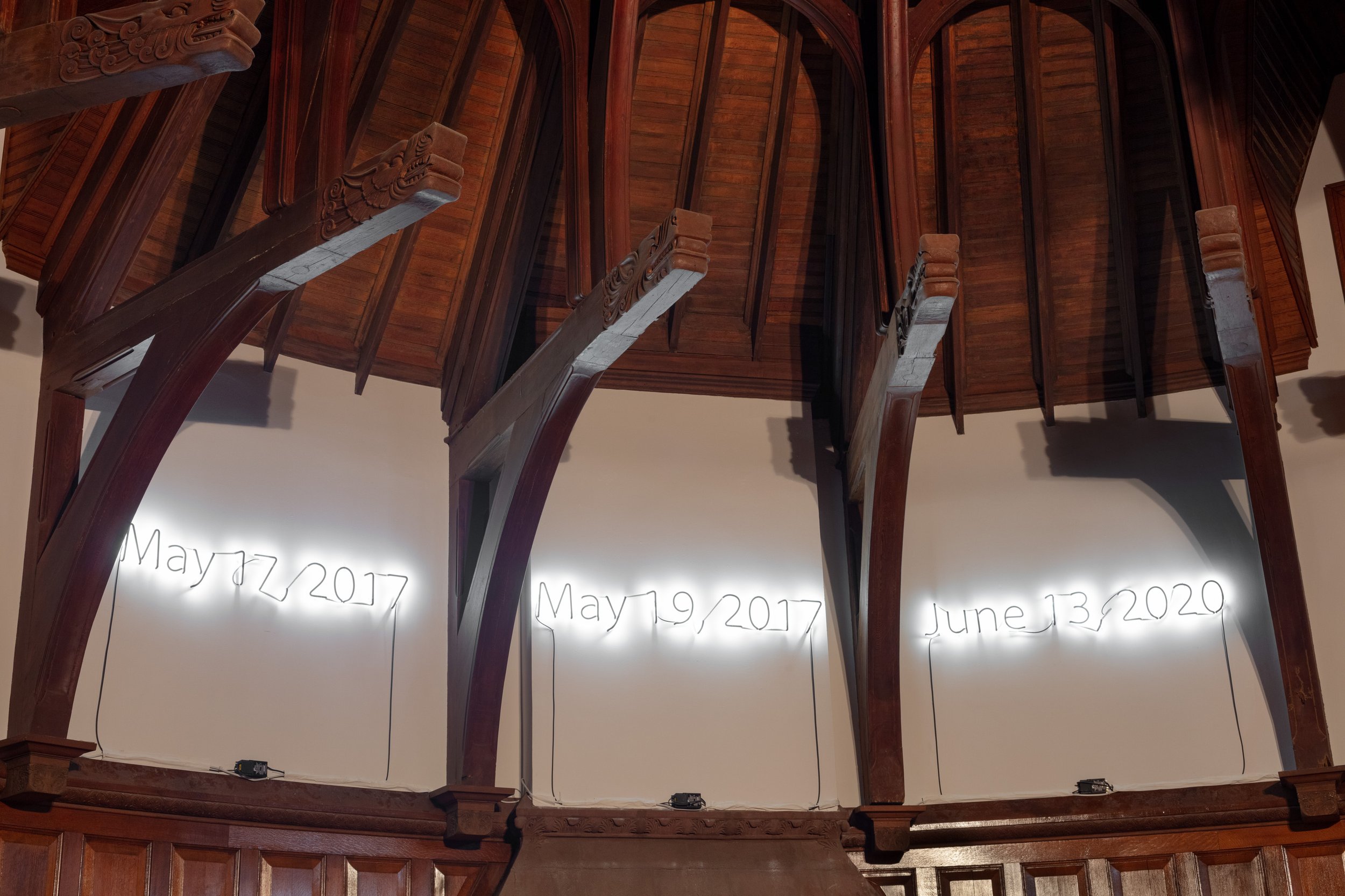

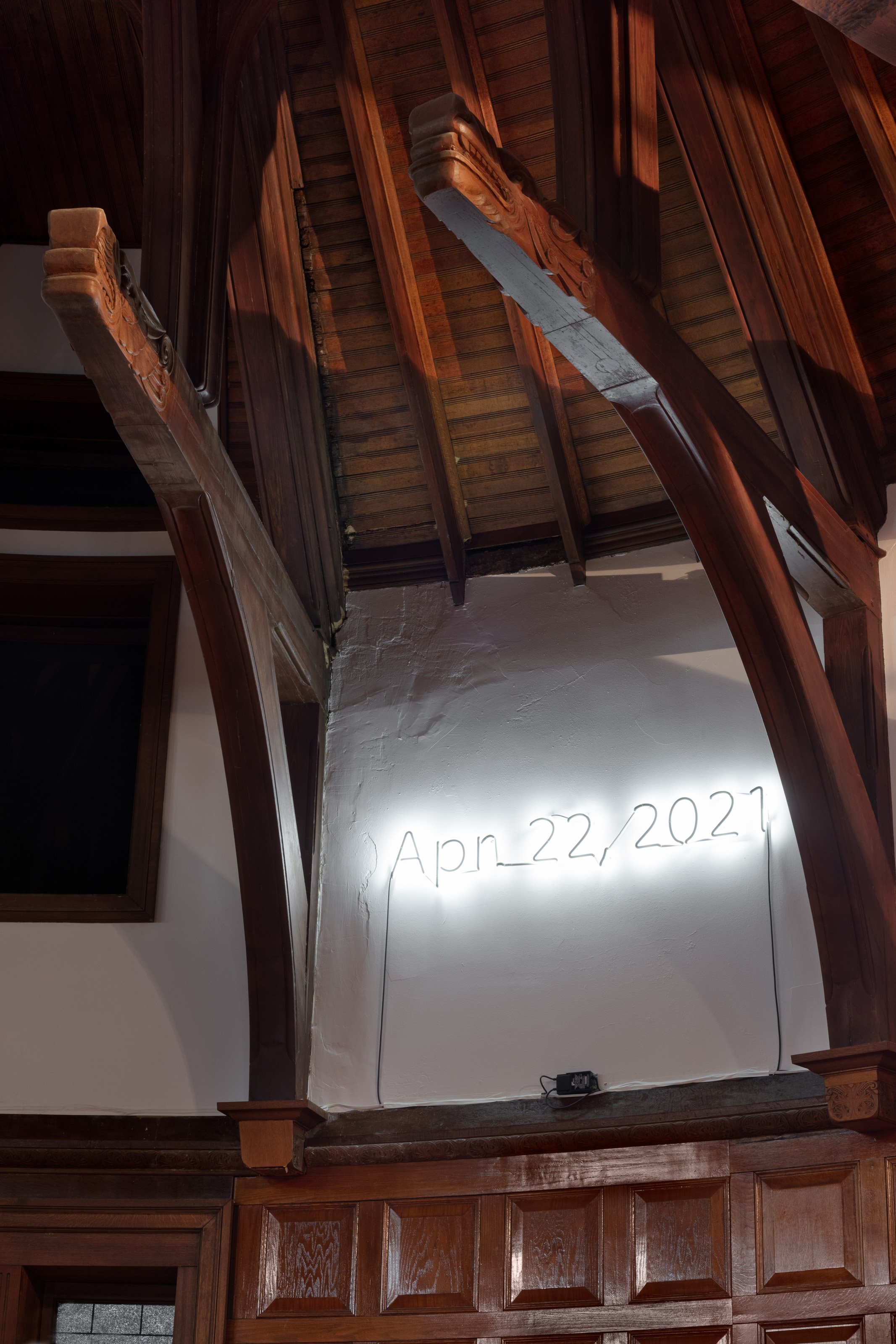
Glenn Ligon, 2021. Installation view: Prospect.5: Yesterday we said tomorrow, 2021–22. Ogden Museum of Southern Art, New Orleans. Courtesy Prospect New Orleans. Photo: Jonathan Traviesa
The Neighborhood Story Project


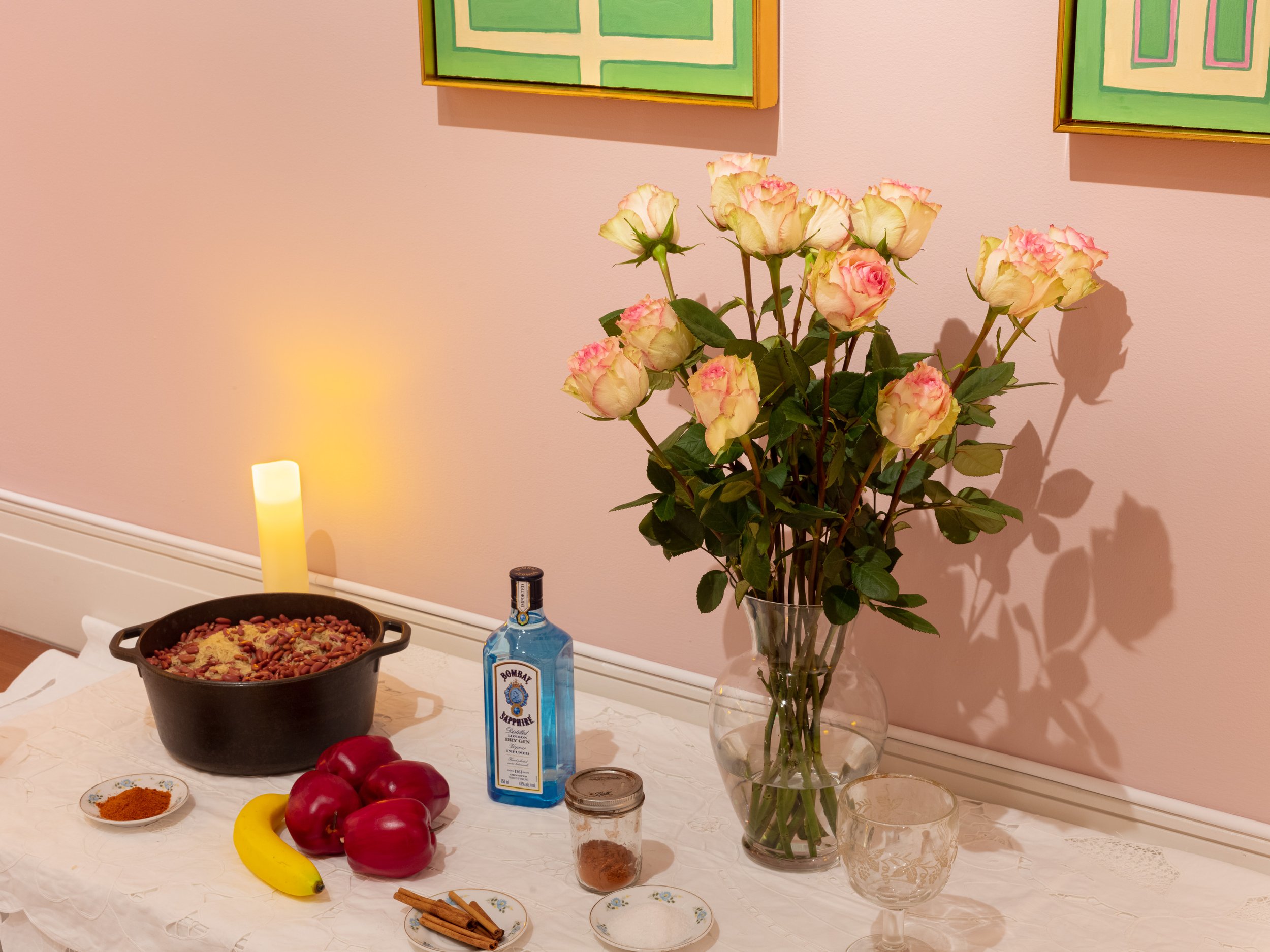

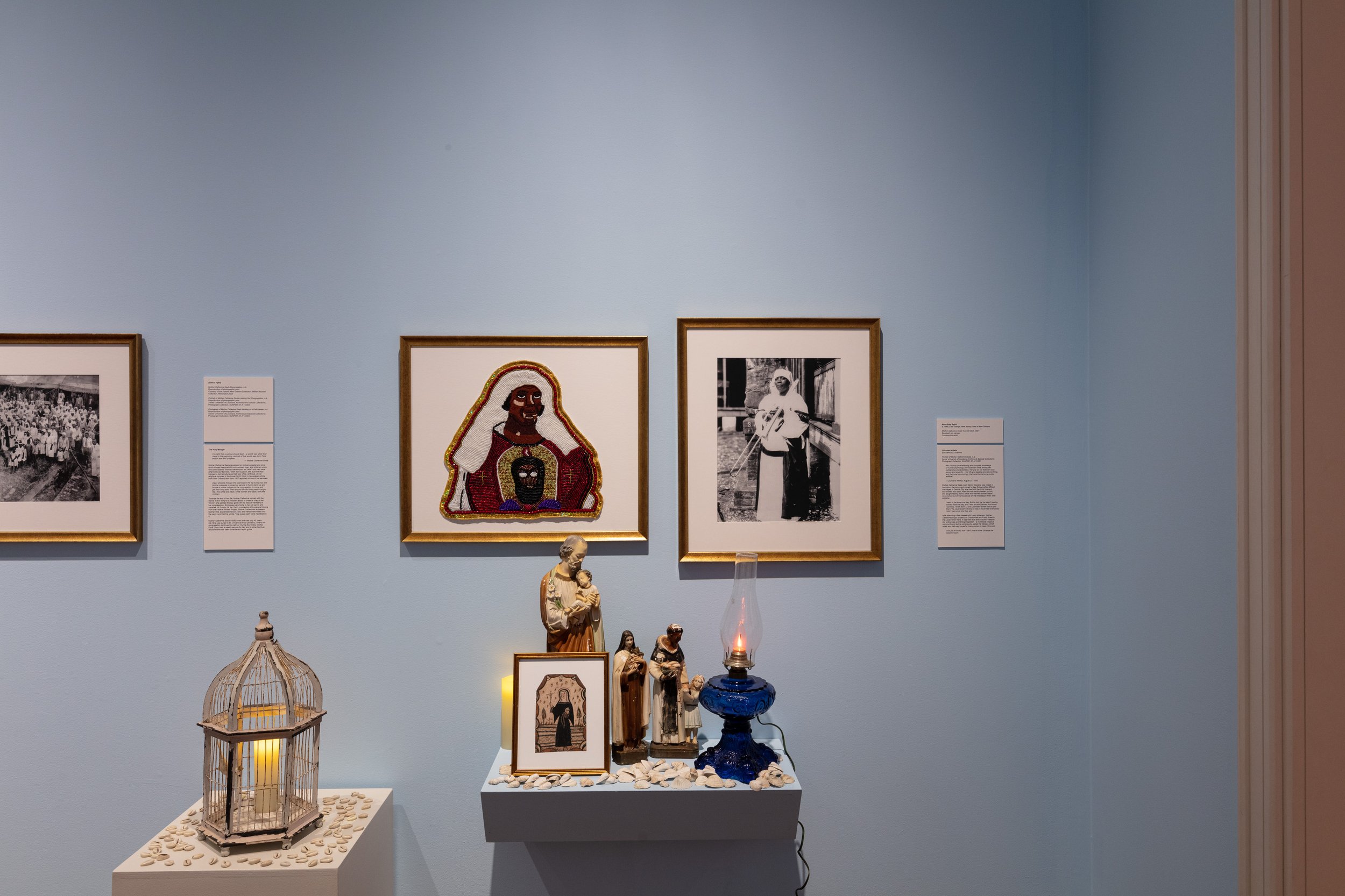
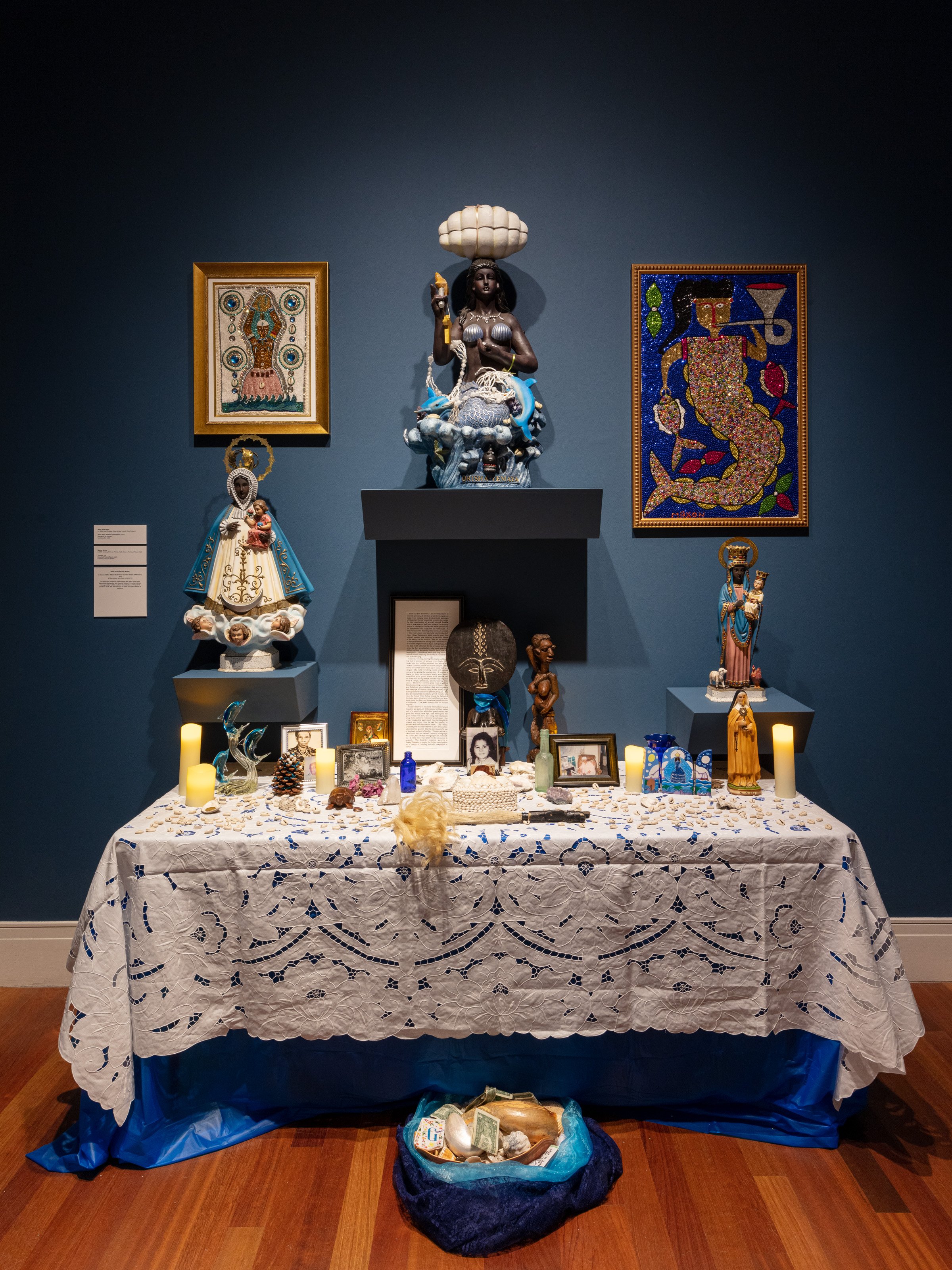
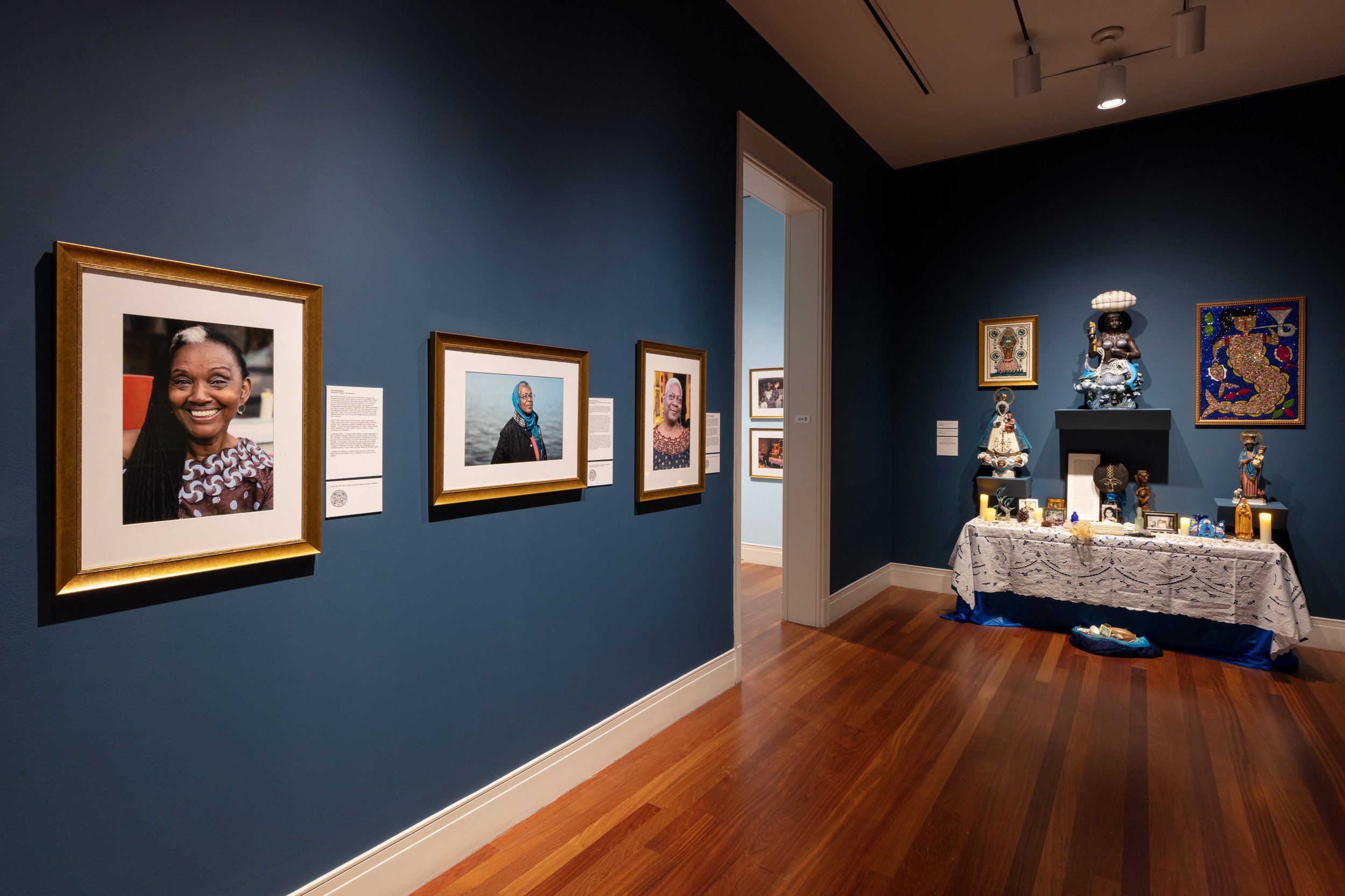
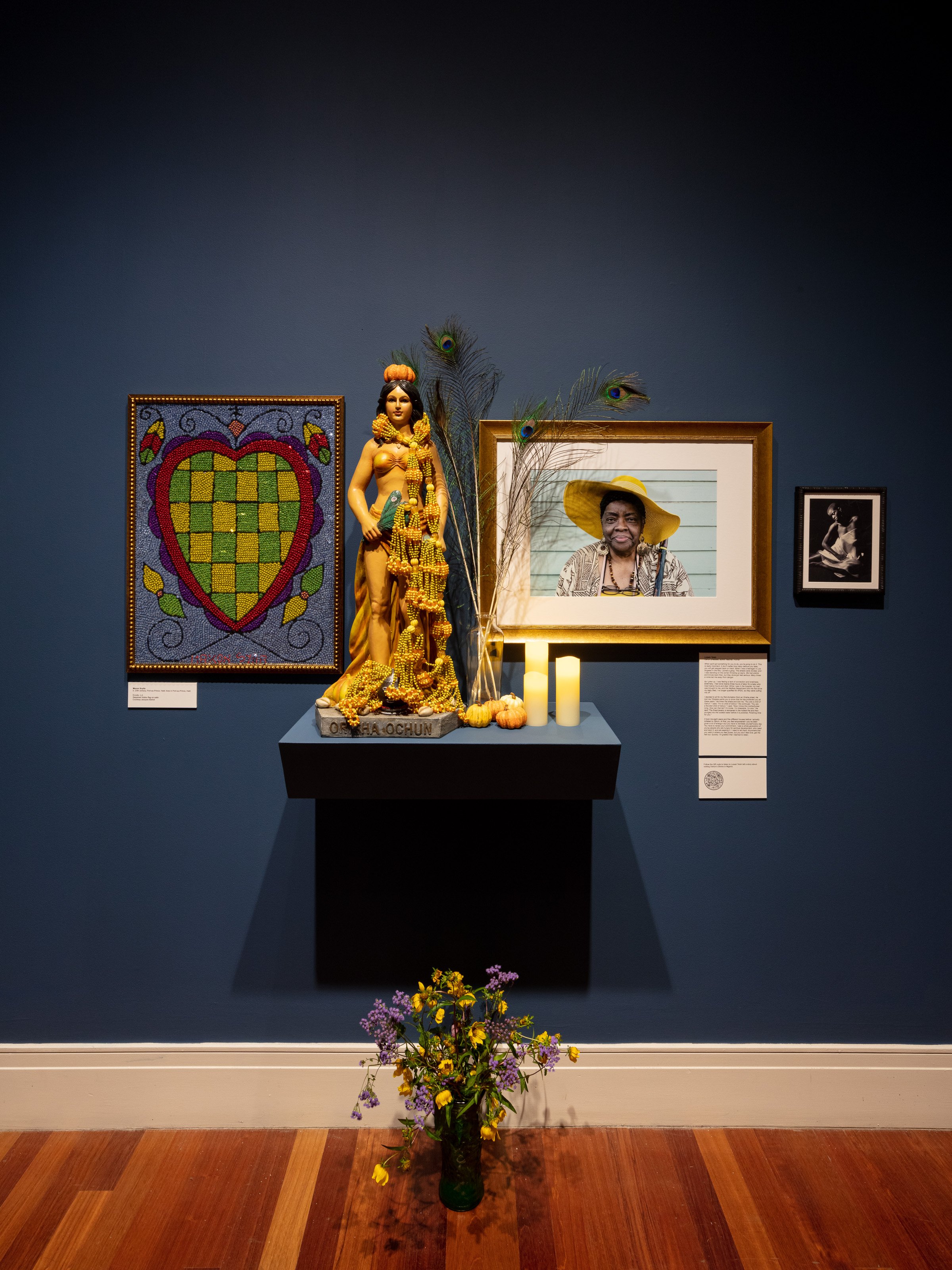
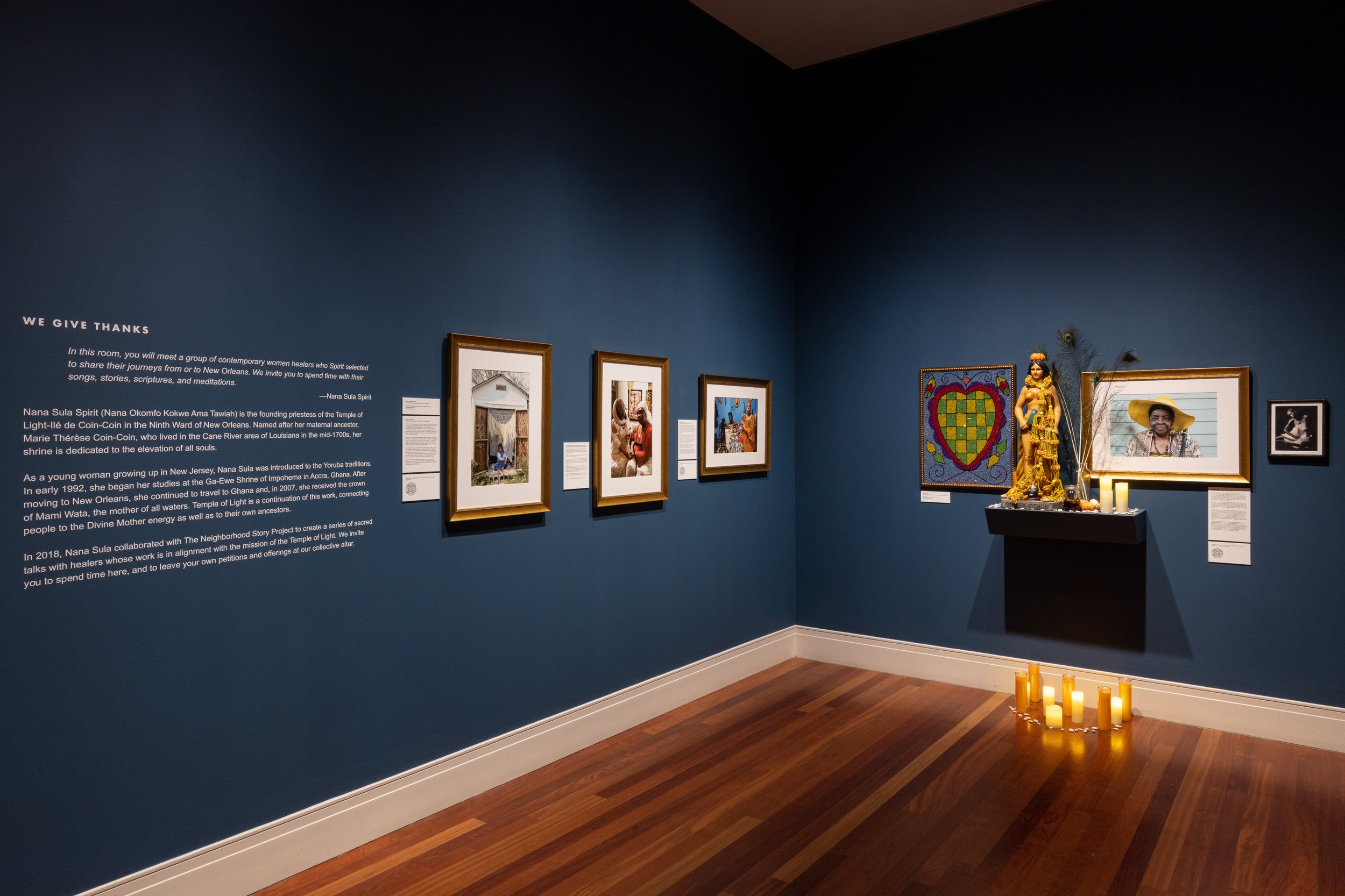
Founded in 2004, New Orleans
Based in New Orleans
venue
Ogden Museum of Southern Art
925 Camp Street, New Orleans, LA 70130
Monday–Sunday, 10 AM–5 PM
neighborhood
Downtown/Central Business District (CBD)
ABout the exhibition
In this space, you will meet a group of contemporary women healers who Spirit selected to share their journeys from or to New Orleans. We invite you to spend time with their songs, stories, scriptures, and meditations.
–Nana Sula Spirit
Nana Sula Spirit (Nana Okomfo Kokwe Ama Tawiah) is the founding priestess of the Temple of Light-Ilé de Coin-Coin in the Ninth Ward of New Orleans. Named after her maternal ancestor, Marie Thérèse Coin-Coin, who lived in the Cane River area of Louisiana in the mid-1700s, her shrine is dedicated to the elevation of all souls.
As a young woman growing up in New Jersey, Nana Sula was introduced to the Yoruba traditions. In early 1992, she began her studies at the Ga-Ewe Shrine of Impohema in Accra, Ghana. After moving to New Orleans, she continued to travel to Ghana and, in 2007, she received the crown of Mami Wata, the mother of all waters. Temple of Light is a continuation of this work, connecting people to the Divine Mother energy as well as to their own ancestors.
In 2018, Nana Sula collaborated with The Neighborhood Story Project to create a series of sacred talks with healers whose work is in alignment with the mission of the Temple of Light. We invite you to spend time here, and to leave your own petitions and offerings at our collective altar.
Listen to the women behind the project
Listen to Luisah Teish read her poem “Hoodoo Mama,” from her book, Jambalaya: The Natural Woman’s Book of Personal Charms and Practical Rituals.
Listen to Luisah Teish tell a story about visiting Oshun’s River in Nigeria.
Listen to Barbara Trevigne talk about her research on Marie Laveau.
Listen to Nana Sula Spirit’s songs in honor of Mami Wata.
Listen to the songs Nana Anoa sings to Yemaya when she goes to the water.
Listen to the songs Nana Anoa sings to Yemaya when she goes to the water.
Listen to Baderinwa read the Psalm 23 and 91.
About the artist
Bruce “Sunpie” Barnes and Rachel Breunlin with Janet Sula Evans, Marie Carmel Loiseau, Nana Anoa Nantambu, Baderinwa Rolland, Luisah Teish, Barbara Trevigne, and Dolores Watson
Since their founding in 2004 The Neighborhood Story Project has used the art of collaborative ethnography to create a vast collection of community-based stories in south Louisiana and beyond. The organization, in partnership with the University of New Orleans, creates portraits of the region by working with their collaborators to move the contours, planes, and angles of a place out onto a cultural canvas. They layer creative nonfiction and in-depth interviews, artifacts, folk and fine art, photographs, and music, among other materials, to craft an immersive space for learning and examination. For many years, The Neighborhood Story Project has turned their books into exhibitions and programs where their audiences are not only observers, but participants, who are able to connect with the lives and narratives presented, and can come away with a sense of how life histories are seated in wider social and cultural contexts. The Neighborhood Story Project often revives and preserves histories which may have been overlooked by mainstream media, and of places that are otherwise at risk of disappearing. Their ethnographies form the basis for art, publications, and performances, creating a new historical record of a place.
Jennifer Packer
b. 1984, Philadelphia
Lives in New York
venue
Ogden Museum of Southern Art
925 Camp Street, New Orleans, LA 70130
Monday–Sunday, 10 AM–5 PM
neighborhood
Downtown/Central Business District (CBD)
About the project
Jennifer Packer’s tender portraits of sitters, predominantly friends and family members, meld abstraction and figuration. Self-possessed and radiant, the figures in her paintings are often shown in states of rest or contemplation. The surfaces of her paintings are richly and vigorously worked, revealing an array of painterly techniques and brushstrokes.
In April (2015) the figure seems to emerge from a glowing yellow background. Draped in a seafoam-green jacket, she reclines in a chair, her legs extending toward the viewer and her boots pressed against the foreground of the painting, as if entering into our space. Even as Packer works to create images sensitive to the quirks and idiosyncrasies of her protagonists, she knows well that the vastness of their inner lives lies beyond her grasp. Instead, her paintings aim to capture a feeling of her sitters, an aura and sensation of presence.
In addition to these images of people, Packer frequently takes up still life painting of flowers and flower bouquets. These works capture both the pleasurable beauty and fleeting nature of flowers, which are used to celebrate as well as to memorialize. Works like Calla Lilies (2015) evince her interest in creating a painting of an object that generates an emotional force akin to that of a portrait.
about the artist
Jennifer Packer paints portraits, interior scenes, and still lifes that give viewers the impression of having glanced into a neighboring window in passing or sifting through personal snapshots. She often engages her friends and family as models, and her work is infused with the authenticity, complexity, and intimacy of those relationships. Packer uses limited color in her paintings and portraits, blending planes into one another, blurring the boundaries between setting and subject. She has altered what it means to produce representational art, which has led her to become one of the most significant painters of her generation. Packer’s work has been included in the Whitney Biennial, New York (2019), and in group exhibitions at the Studio Museum in Harlem, New York, and the Contemporary Arts Museum Houston, among others. Solo exhibitions include Tenderheaded, which debuted at the Renaissance Society at the University of Chicago in 2017 and traveled to the Rose Art Museum at Brandeis University, Waltham, Massachusetts, in 2018. Packer earned a BFA from the Tyler School of Art and Architecture, Temple University, Philadelphia (2007), and an MFA from Yale School of Art, New Haven, Connecticut (2012). She is a professor at the Rhode Island School of Design, Providence.
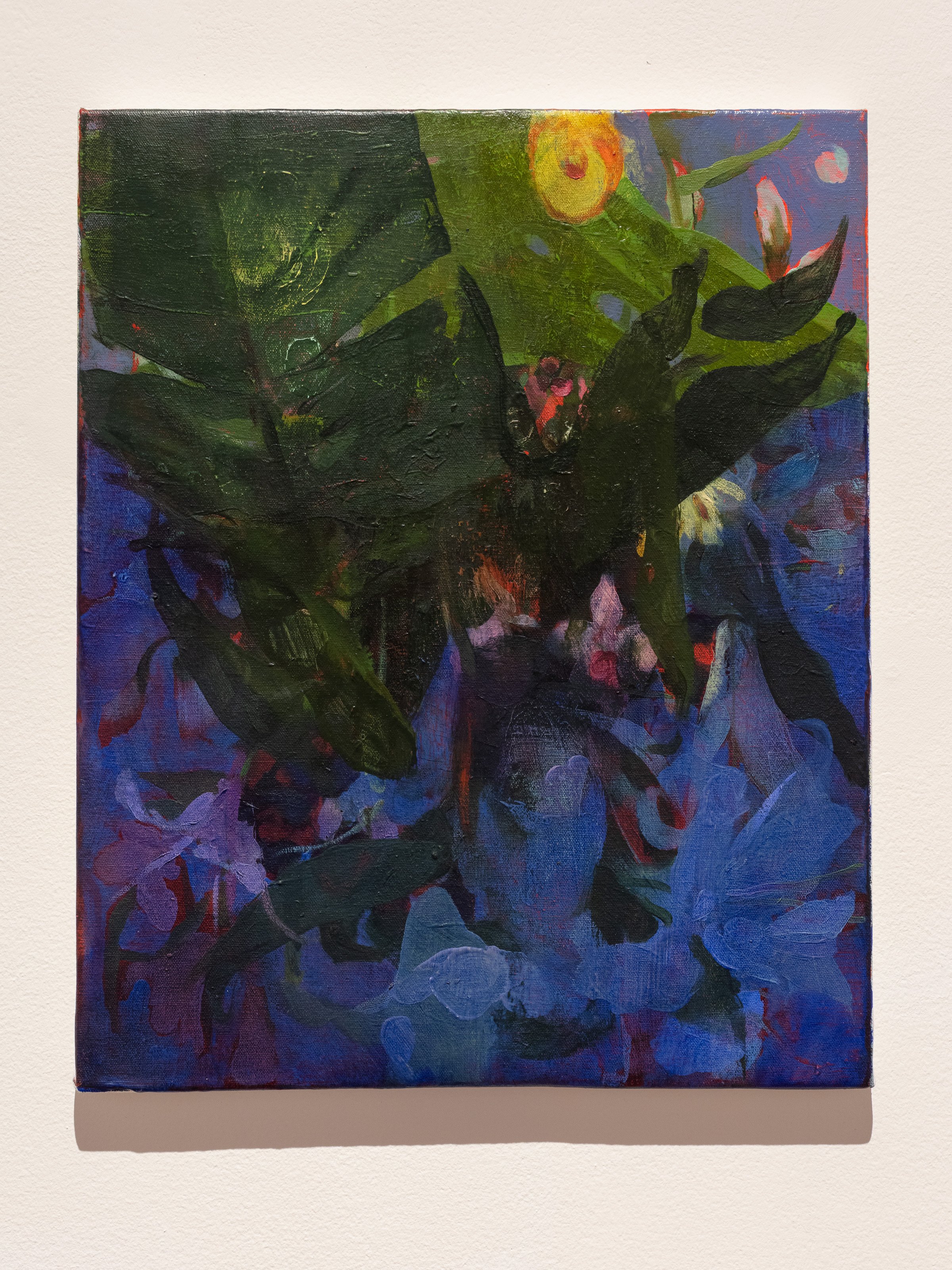
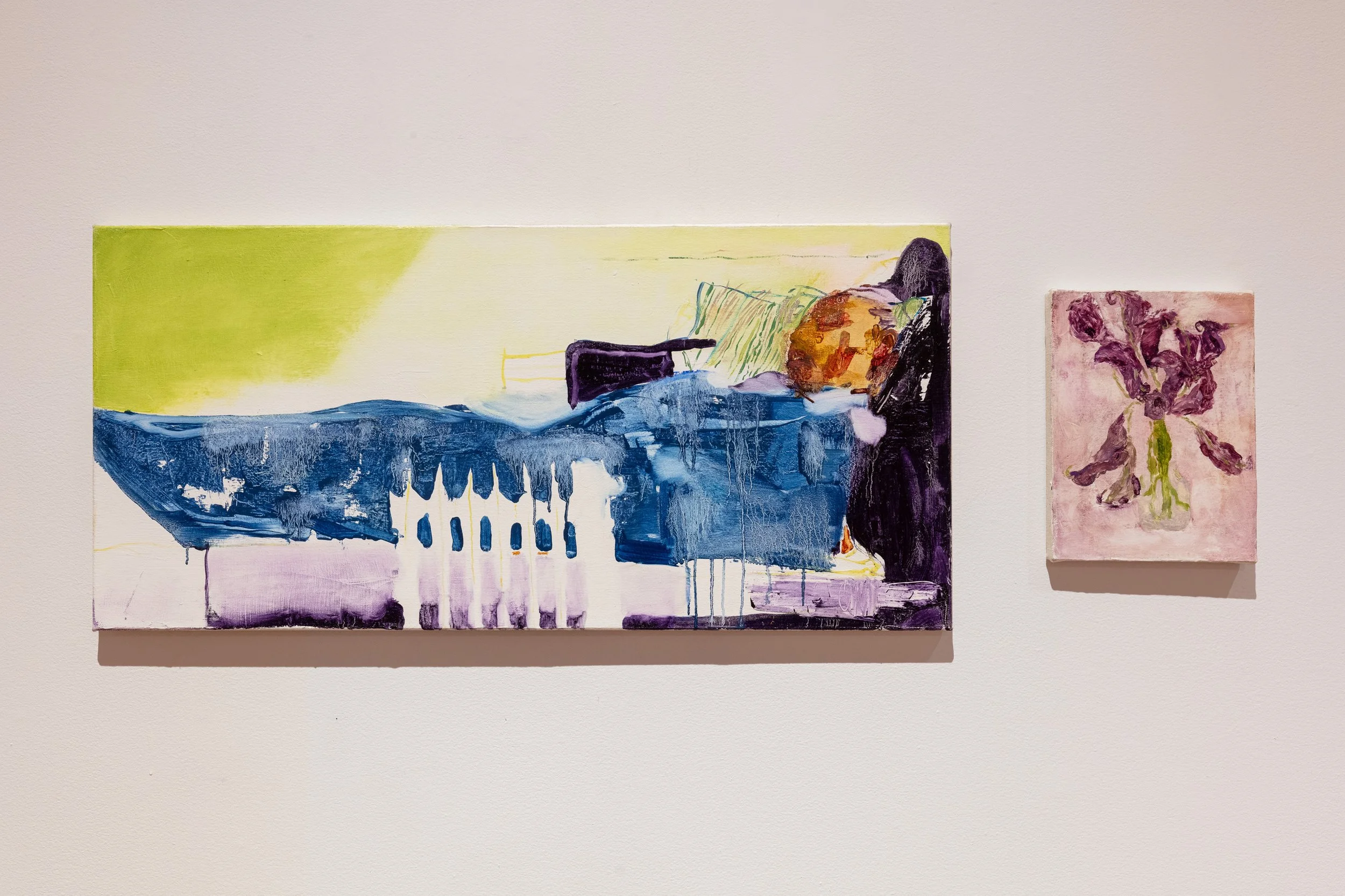
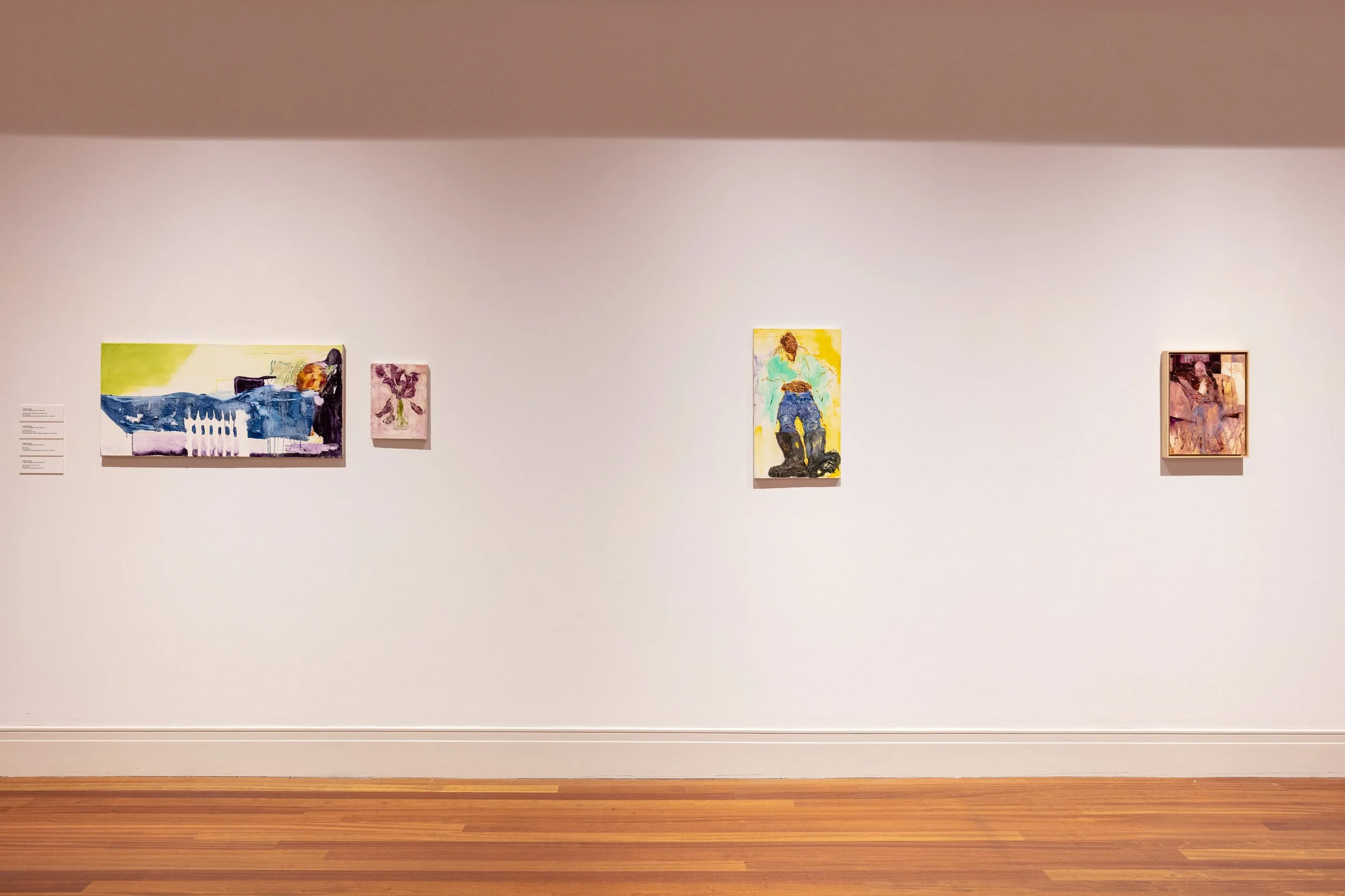
Jennifer Packer, 2021. Installation view: Prospect.5: Yesterday we said tomorrow, 2021–22. Ogden Museum of Southern Art, New Orleans. Courtesy Prospect New Orleans. Photo: Jonathan Traviesa
Welmon Sharlhorne
b. 1952, Houma, Louisiana
Lives in New Orleans
venue
Ogden Museum of Southern Art
925 Camp Street, New Orleans, LA 70130
Monday–Sunday, 10 AM–5 PM
neighborhood
Downtown/Central Business District (CBD)
About the project
Welmon Sharlhorne’s drawings use a limited number of materials and precise vocabulary of forms to evoke an array of familiar and imagined structures. Sharlhorne’s works are defined by a signature style that bears a relationship to calligraphy and uses spare linework and patterning to create open compositions. He revisits recurrent subjects including animals, fantastic beasts, vehicles, and architecture, especially churches. The geometry of his works lends them a consistent rhythm that mirrors the constant and incremental passage of time. His drawings often feature clock faces at their center, as well as imagery that speaks to life, death, law, order, and salvation.
The works selected also relate to his biography––his time spent in the Louisiana State Penitentiary in Angola and living in New Orleans––as well as imagined spaces beyond this world that his drawings invite us into. Sharlhorne began drawing using an assortment of common tools—ballpoint pens, bottle caps, washers, bowls, as well as manila envelopes, the only large paper he could regularly access while incarcerated, through contact with his lawyers. Though his tools reflect conditions of constraint, his transformations speak to his technical skills and the transcendent abilities of dedication to a craft.
about the artist
Welmon Sharlhorne is a self-taught artist who learned his craft while wrongfully imprisoned in the Louisiana State Penitentiary (“Angola”) for more than twenty years. While in prison, Sharlhorne began to make art. He created ink drawings using an assortment of “prison tools” such as bottle caps, washers, and bowls to create circles and curves, and tongue depressors to create straight lines. The only paper allowed to him was manila envelopes, which were provided for contact with his lawyers. His meticulous pen and ink drawings of imaginary structures, people, buses, birds, and night skyscapes employ geometry and pattern, and evoke a sense of spiraling time, likely reflective of his seemingly interminable incarceration.
Sharlhorne sold his works to other inmates, who sent them to family members and others outside of Angola. They eventually made their way into broader circulation and gained critical and market attention. Sharlhorne’s work is included in the collections of the Smithsonian American Art Museum, Washington, DC; Collection de l’Art Brut, Lausanne, Switzerland; and the American Visionary Art Museum, Baltimore.


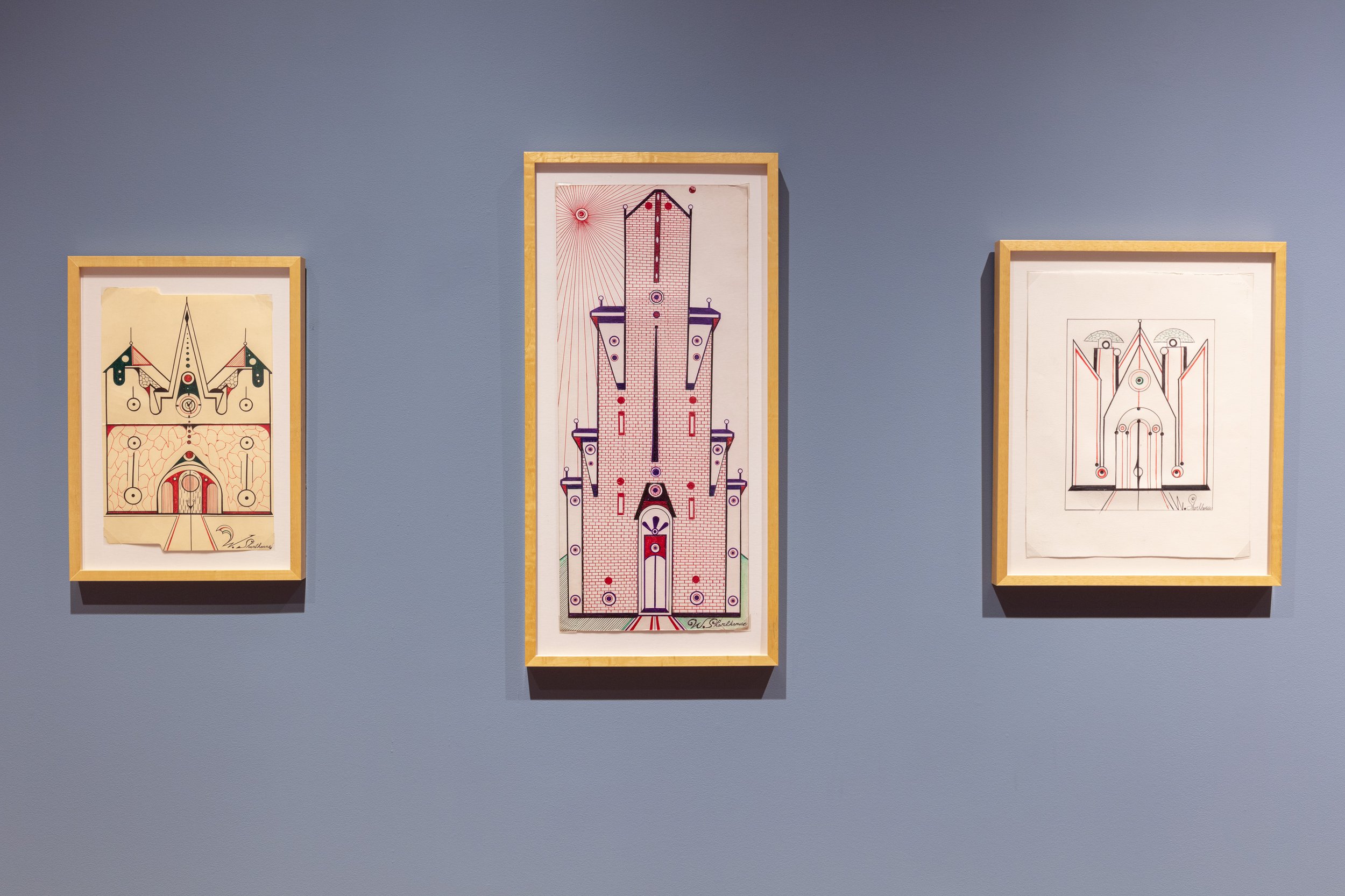
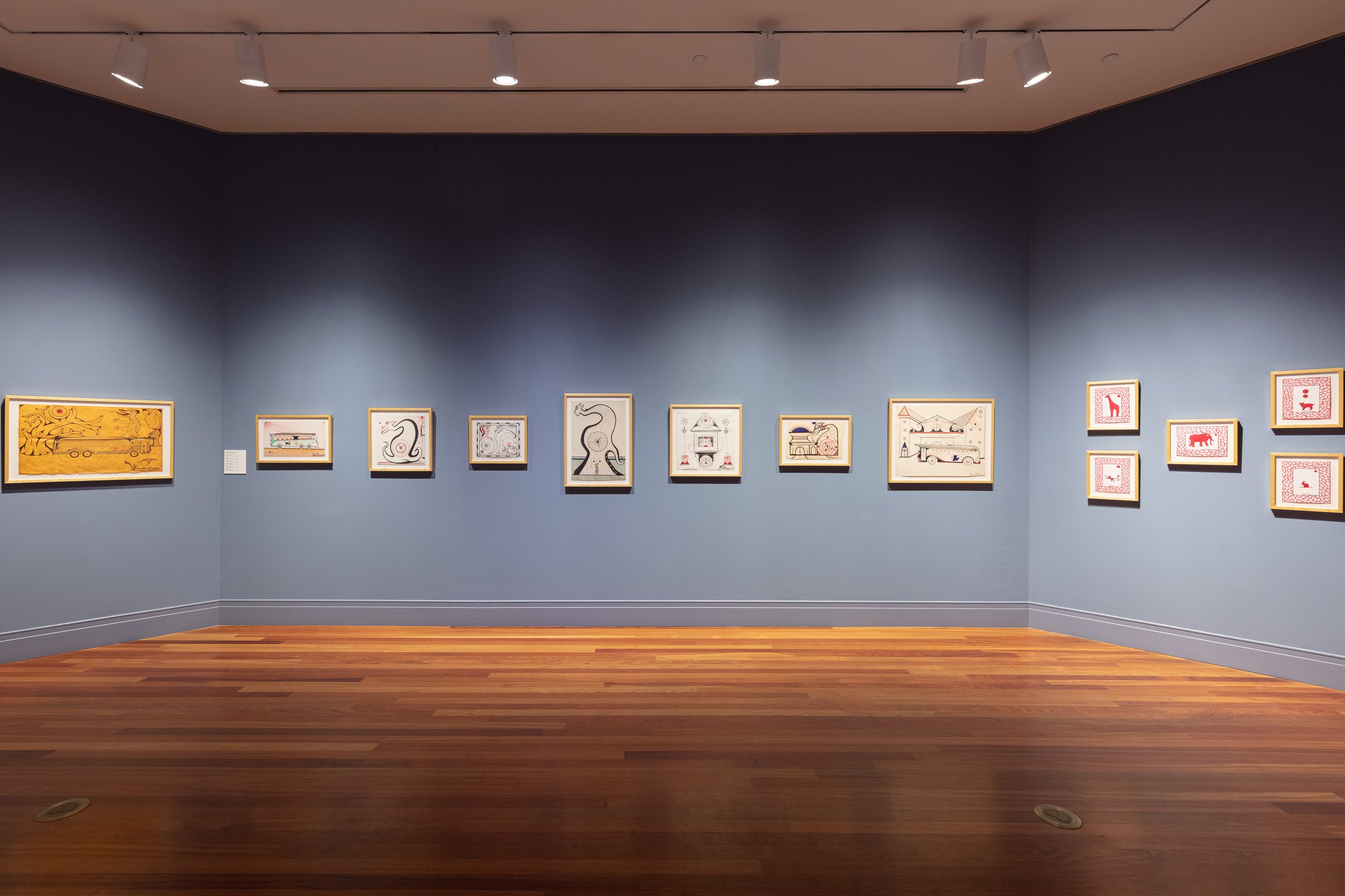

Welmon Sharlhorne, 2021. Installation view: Prospect.5: Yesterday we said tomorrow, 2021–22. Ogden Museum of Southern Art, New Orleans. Courtesy Prospect New Orleans. Photo: Jonathan Traviesa



